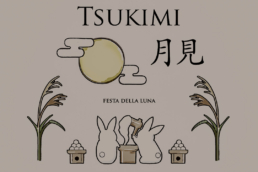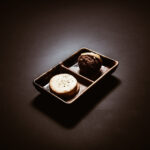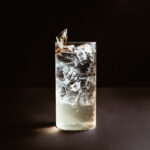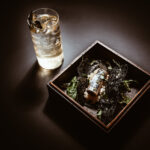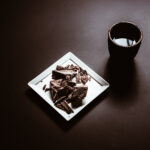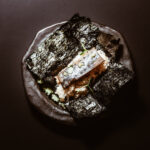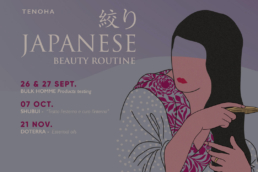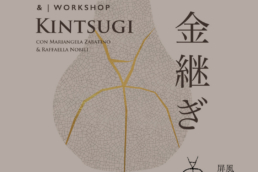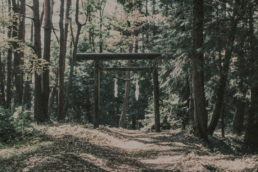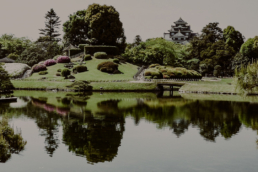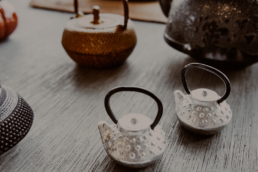TENOHA &|TASTE: Tsukimi Aperitivo e SUNTORY Whisky tasting
TENOHA Milano offers us two more exciting and tasty appointments with the TSUKIMI APERITIVO and the SUNTORY WHISKY TASTING! Two unmissable appointments to feel in Japan! Let's see what it is about.
TSUKIMI お月見 APERITIVO @ TENOHA Milano
Author: SaiKaiAngel

What is O-Tsukimi? Literally means "to admire the full moon", but it is the feast of the full moon in autumn and is celebrated on the 15th day of the eighth month of the traditional Japanese lunar calendar. It seems that the full moon of the eighth month was the most beautiful of the year, that's why nobles gathered to celebrate and admire the beauty of the full moon, composing music and tanka poetry verses. Today, the Tsukimi is celebrated by offering the moon the famous tsukimi-dango 月見団子, rice cakes whose shape reminds of the full moon and eating "special" dishes, such as tsukimi soba or udon.
At 7 p.m. there will be a unique and unmissable show: Making of MOCHITSUKI (餅つき) , have you ever heard of it? The mochitsuki is the ceremony with which the mochi is prepared. How does it work? The rice, previously soaked and then cooked, is pounded in the traditional large mortar called usu (臼) with a wooden hammer called kine (杵). Usually two people carry out this procedure: the first one beats rhythmically with the kine while the second one turns and moistens the mochi; a great coordination is necessary to carry out this manoeuvre without hindering each other (and without getting hurt). The dough thus obtained is cut and shaped into small spheres. In recent times the mochitsuki ceremony is usually reserved for special events, including the TSUKIMI, known as the Moon Festival, typically represented by the figure of a rabbit stepping on rice in a mortar to prepare the mochi.
TENOHA Milano makes us celebrate autumn just like in Japan!! A special weekend dedicated to the typical flavors of this festival and its curiosities. An appointment not to be missed!
Wen: 1 - 2 - 3 - 4 October
where: TENOHA & | TASTE — Via Vigevano, 18, 20144 Milano
Cost: Aperitivo 12€ (1 drink + aperitivo box)
SUNTORY WHISKY TASTING
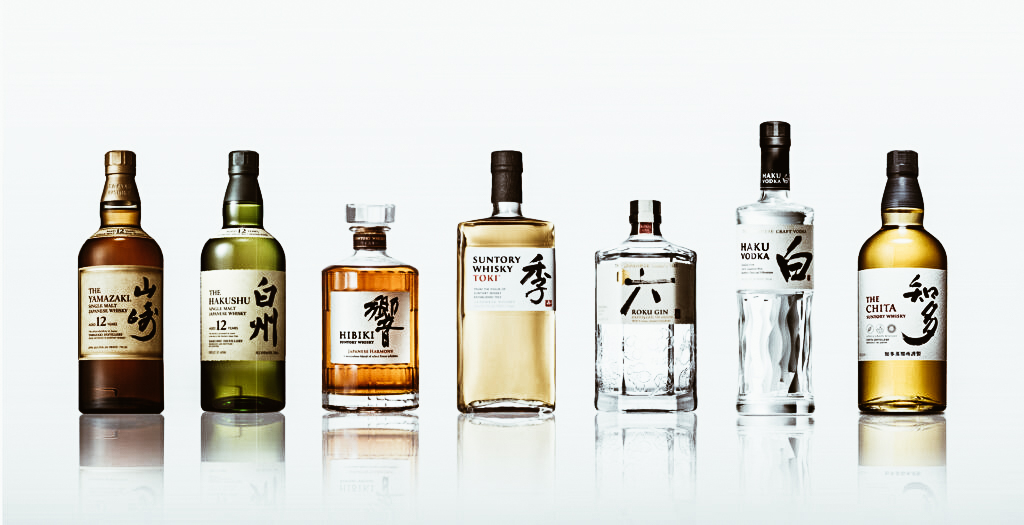
Let's go back to Japan again in our special corner of the Rising Sun, TENOHA Milano, with a special aperitif or an equally unique tasting menu/food pairing with Premium Japanese Whisky from the house SUNTORY (chita, hibiki and toki): no matter how experienced you have ever had, you will surely be amazed by the new tastes that Japan offers you! We are waiting for you for this new special experience!
Quando: from 6 to 14 October 2 Aperitivo options
-15€ 3 Whisky Highball with aperitivo plate (Whiskies are Chita, Hibiki, Toki)
-12€ Special drink with Roku gin and aperitivo plate
from 8 to 11 October: Special Tasting Menu/ Food pairing with Premium Japanese Whisky of the house SUNTORY (chita, hibiki and toki) BOOKING Required
Where: TENOHA & | TASTE — Via Vigevano, 18, 20144 Milano
For more information: https://www.tenoha.it/
photo credit: Anna D'averio
TENOHA Milano presenta: Bulk Homme + Beauty Routine
TENOHA Milano reminds the importance of the Japanese Beauty Routine also to men with BULK HOMME! First of all, let's do a little reminder on what the Japanese Beauty Routine is.
TENOHA Milan and the Japanese Beauty routine
Author: SaiKaiAngel
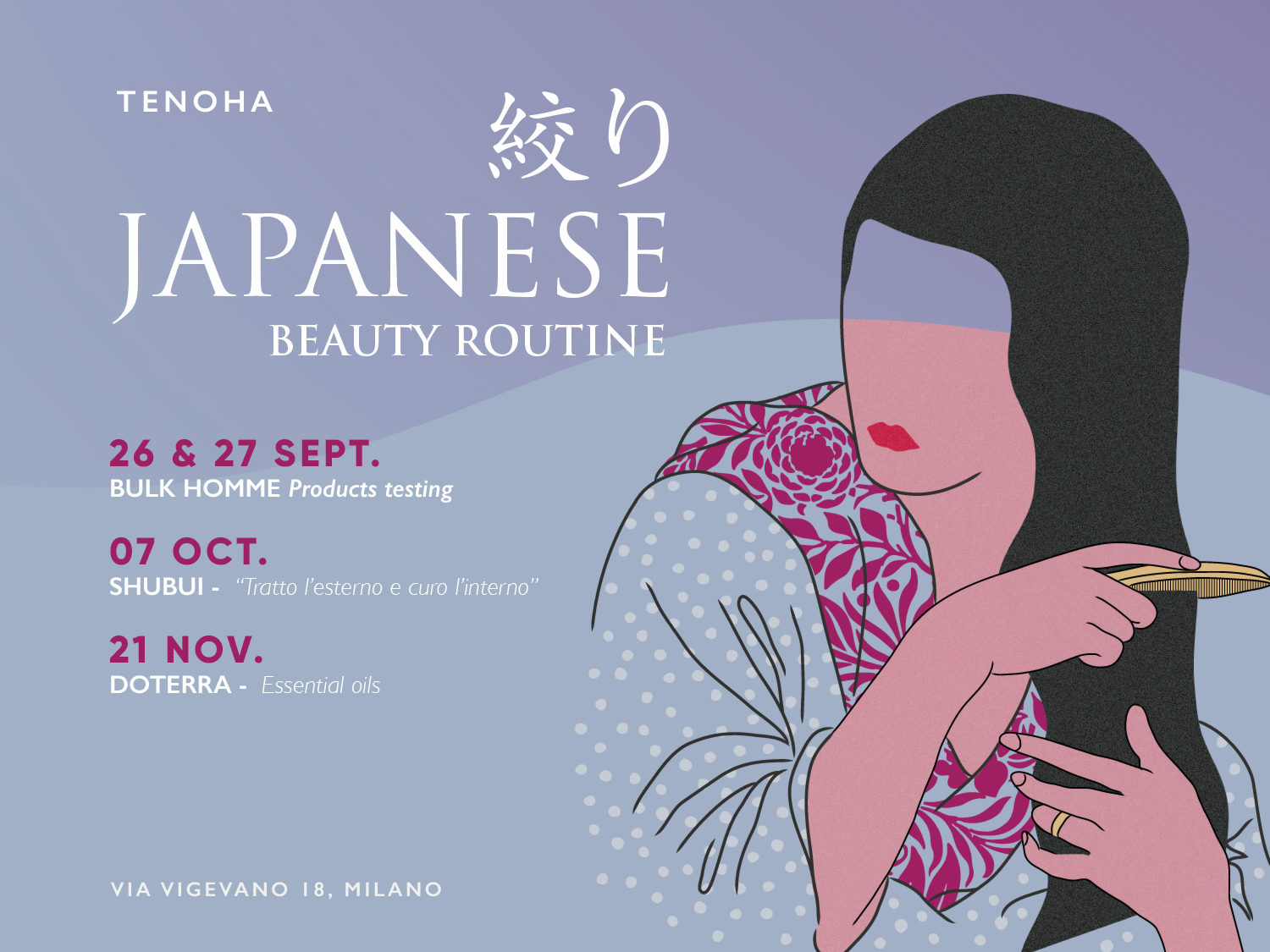
Japanese Beauty Routine is a real statement for our body, a way to remind it every day that we must take care of it. The first declaration of love must be made to ourselves and to our well-being. You too, men! In the TENOHA &| SHOP space of TENOHA Milano, you can do it! Let's take a look at what this new chapter of the Japanese Beauty Routine is and talk about BULK HOMME!

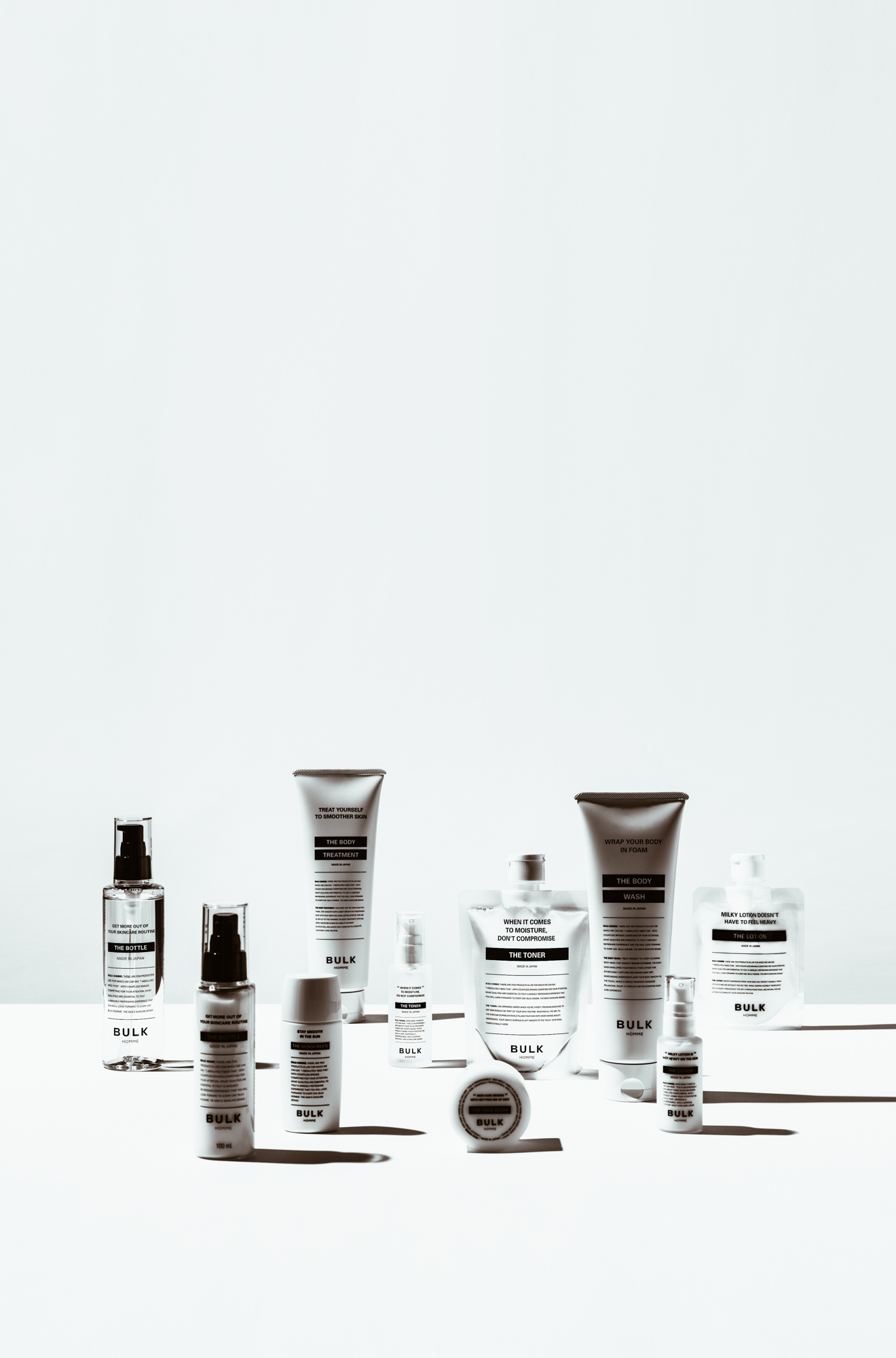
BULK HOMME was launched in Japan in 2013 since then its rise has been very fast especially in the D2C market directed to the consumer. Now, BULK HOMME includes 18 items with distribution throughout East Asia.
Special attention is also given to design, which is not only very elegant but also environmentally friendly, which is very important especially nowadays.
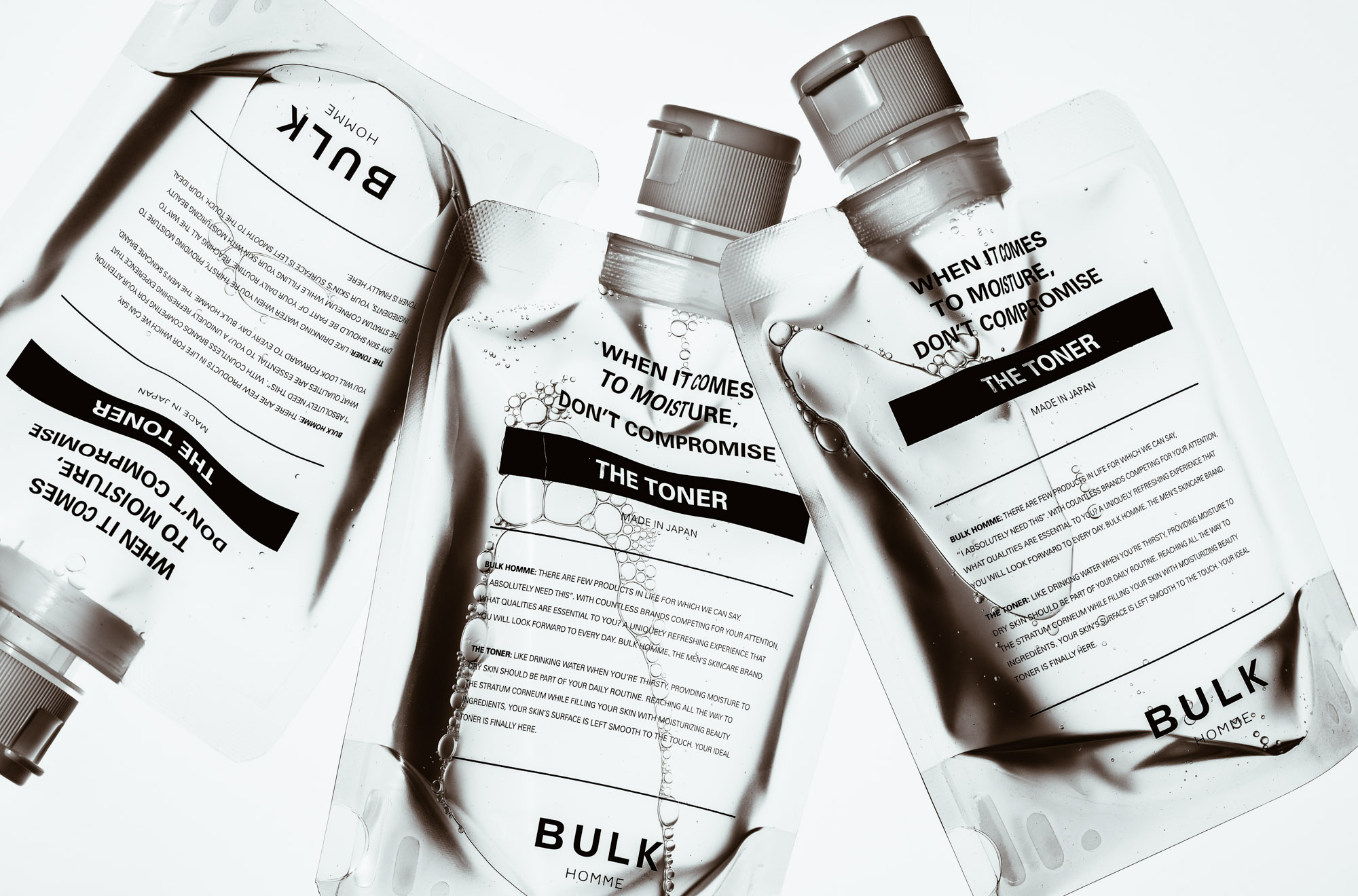
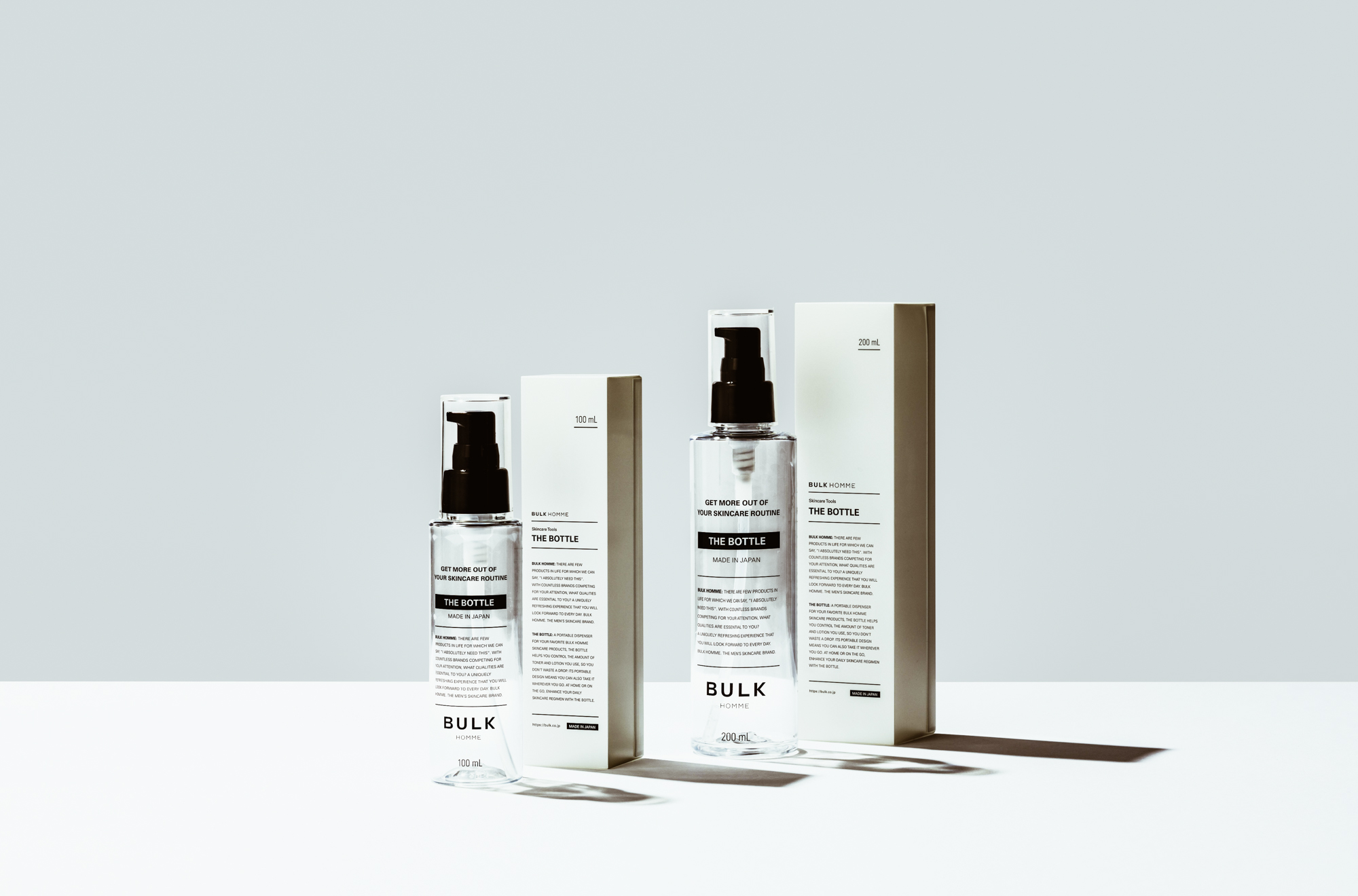
There are few products in life for which we can say: "I absolutely need it", with countless brands competing for our attention. But have you ever wondered what qualities are essential for you? BULK HOMME is a unique and refreshing experience that you will look forward to every day. You will see that every day skincare with BULK HOMME will become an essential appointment that you will never be able to do without again. Not only it will help you making that famous "declaration of love" to your body we were talking about earlier, but it will also be a moment of relaxation not only of the skin, but also of the whole body. Simple but exciting, the essence of everyday life that fascinates the senses. The skin-care solutions are effective, presented with style and elegance, and a pleasure to try. Treat yourself with a moment of pleasure just for yourself with BULK HOMME, the brand for men's skin-care.
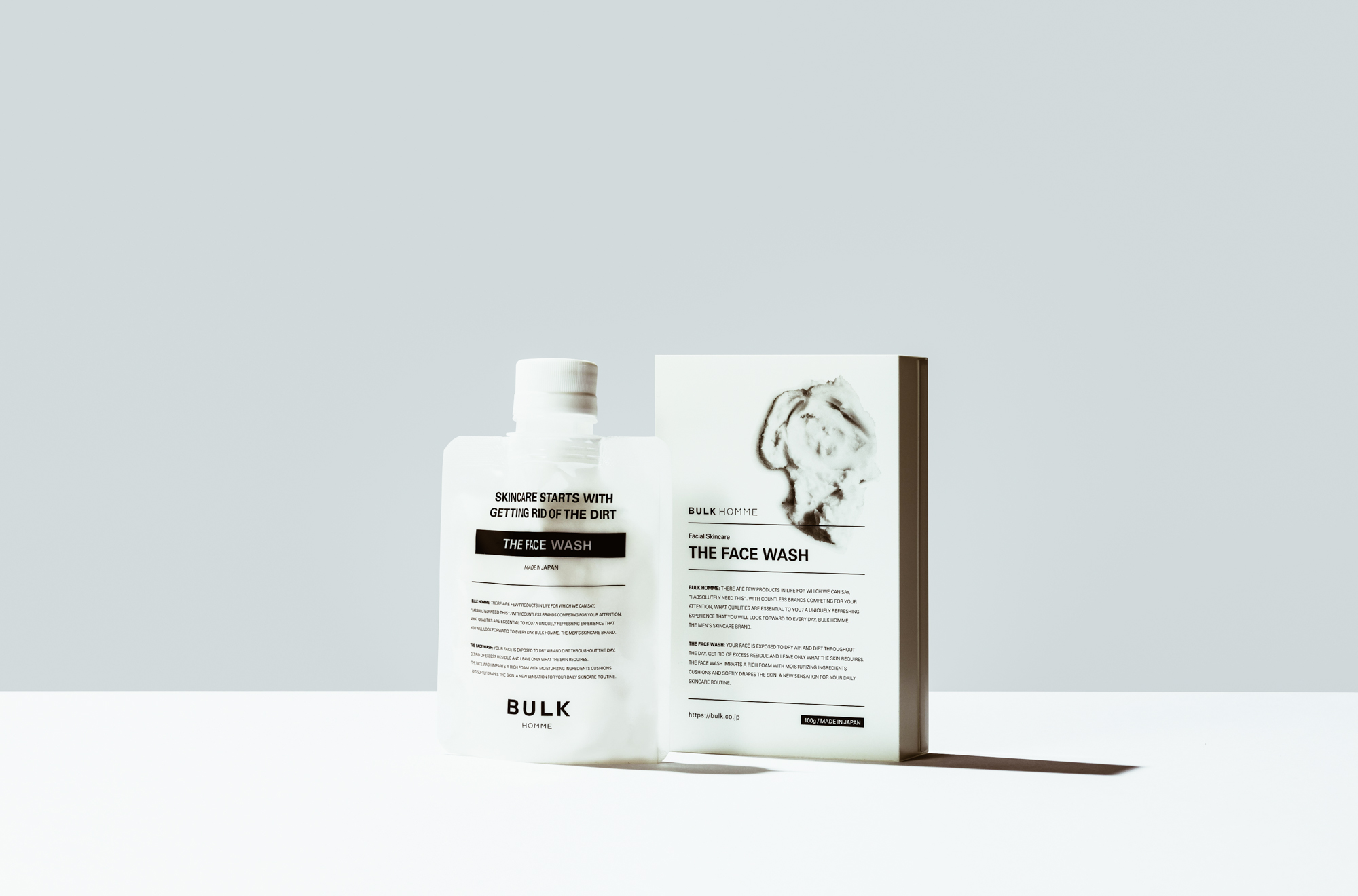
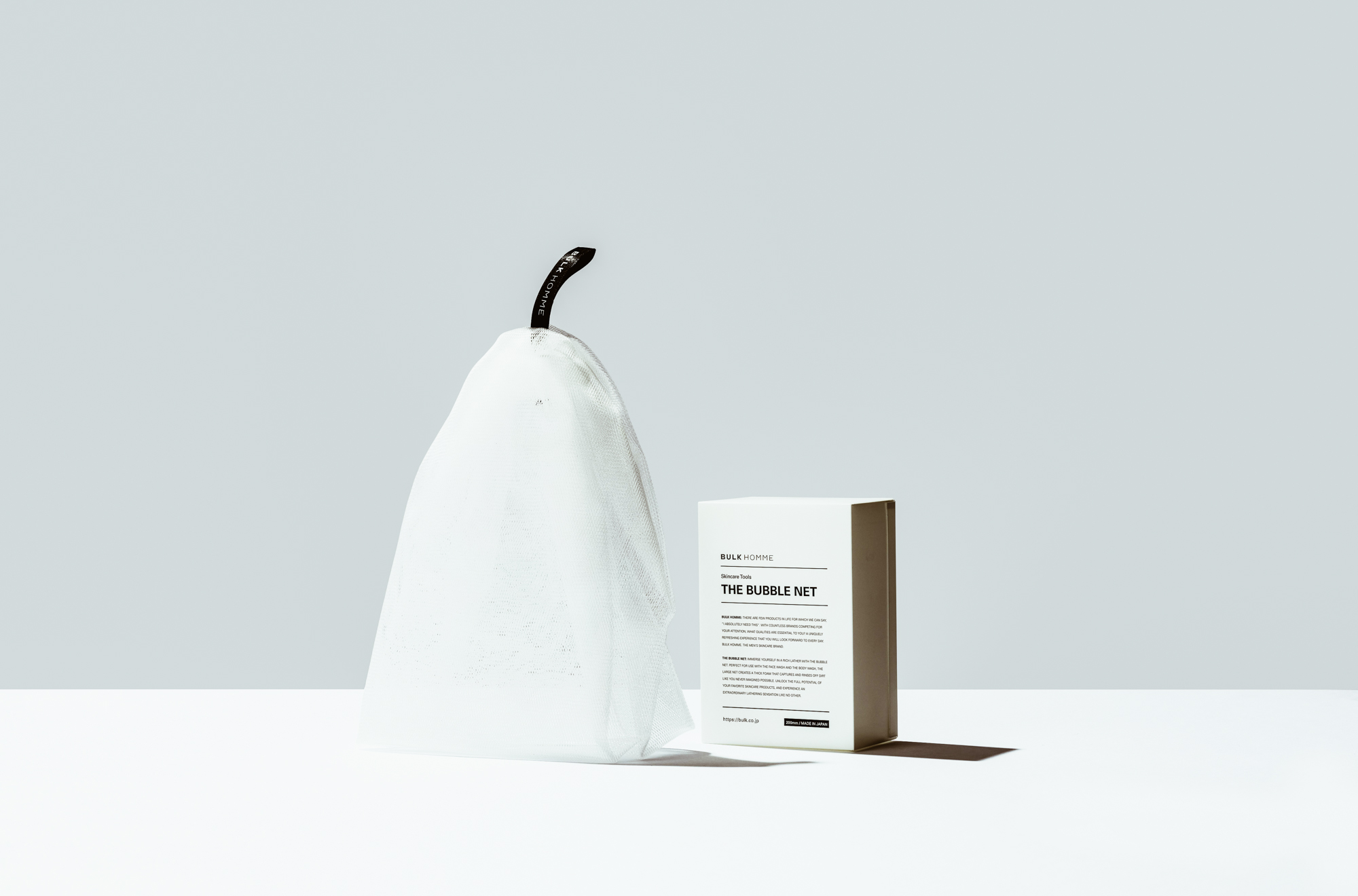
BULK HOMME reminds men the importance of a good skin-care with three phases: washing the face, using toner and lotion.
What makes BULK HOMME products unique is not only the special design and quality of the product itself, but also their texture. Usually we are used to products with a heavy, oily texture that eventually turns out to be unsuitable for our skin, we feel it very suffocating on our face. The texture of BULK HOMME products, instead, is also light thanks to the quality natural ingredients including willow, silk protein, Onsen moisturizing water rich in minerals, Yuzu extracts, green apple and green tea.
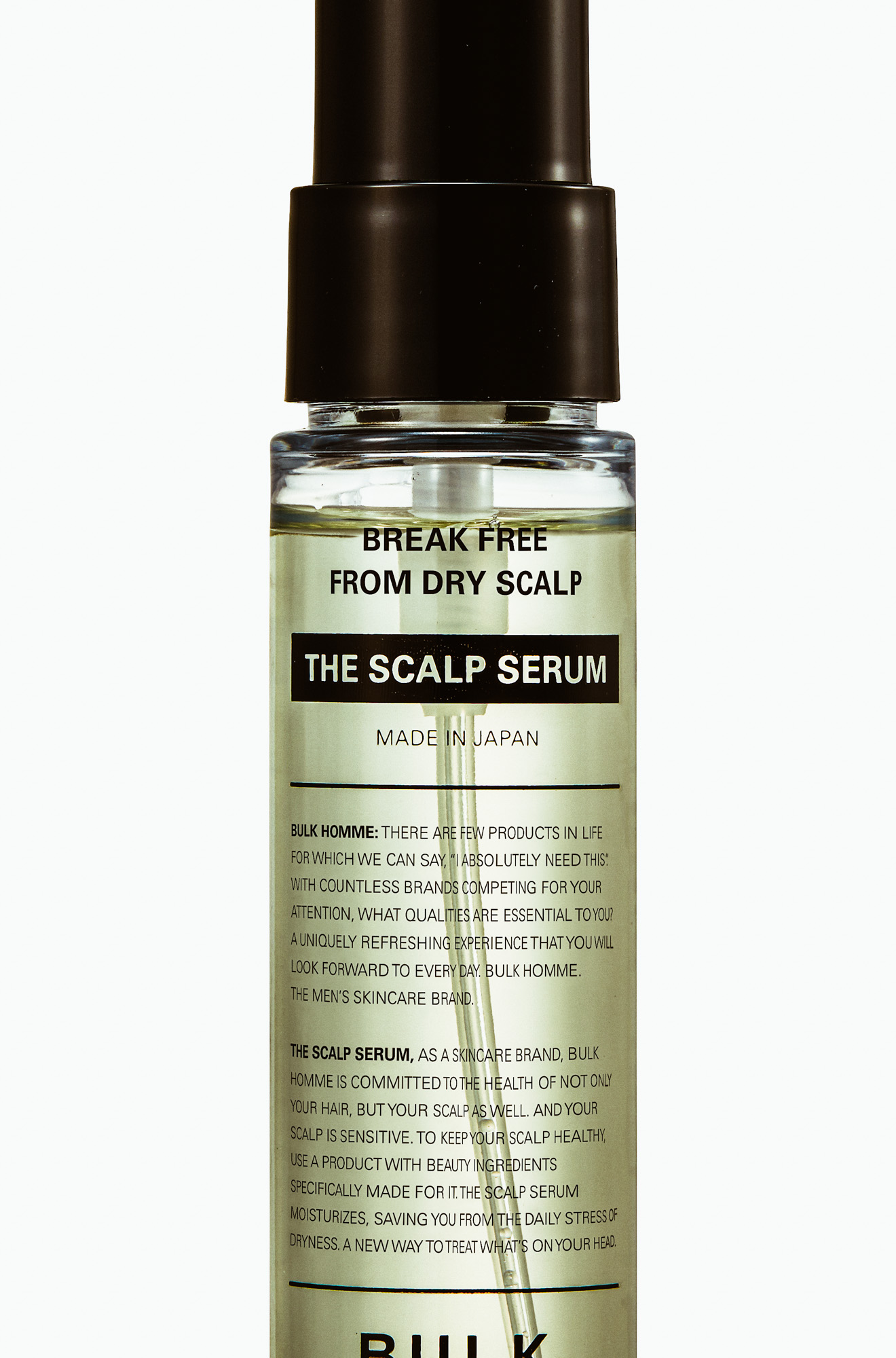

If you are a man you cannot miss this opportunity to try BULK HOMME products that directly from Japan you can find in TENOHA &| SHOP by TENOHA Milano! Fortunately now there is this corner of Japan that allows us to have the best products just a step away from us! In case you are not a man, but you are looking for a special and quality gift to give to a man, you will be sure to make a great impression with BULK HOMME products! It's definitely something that men will not be able to do without soon!
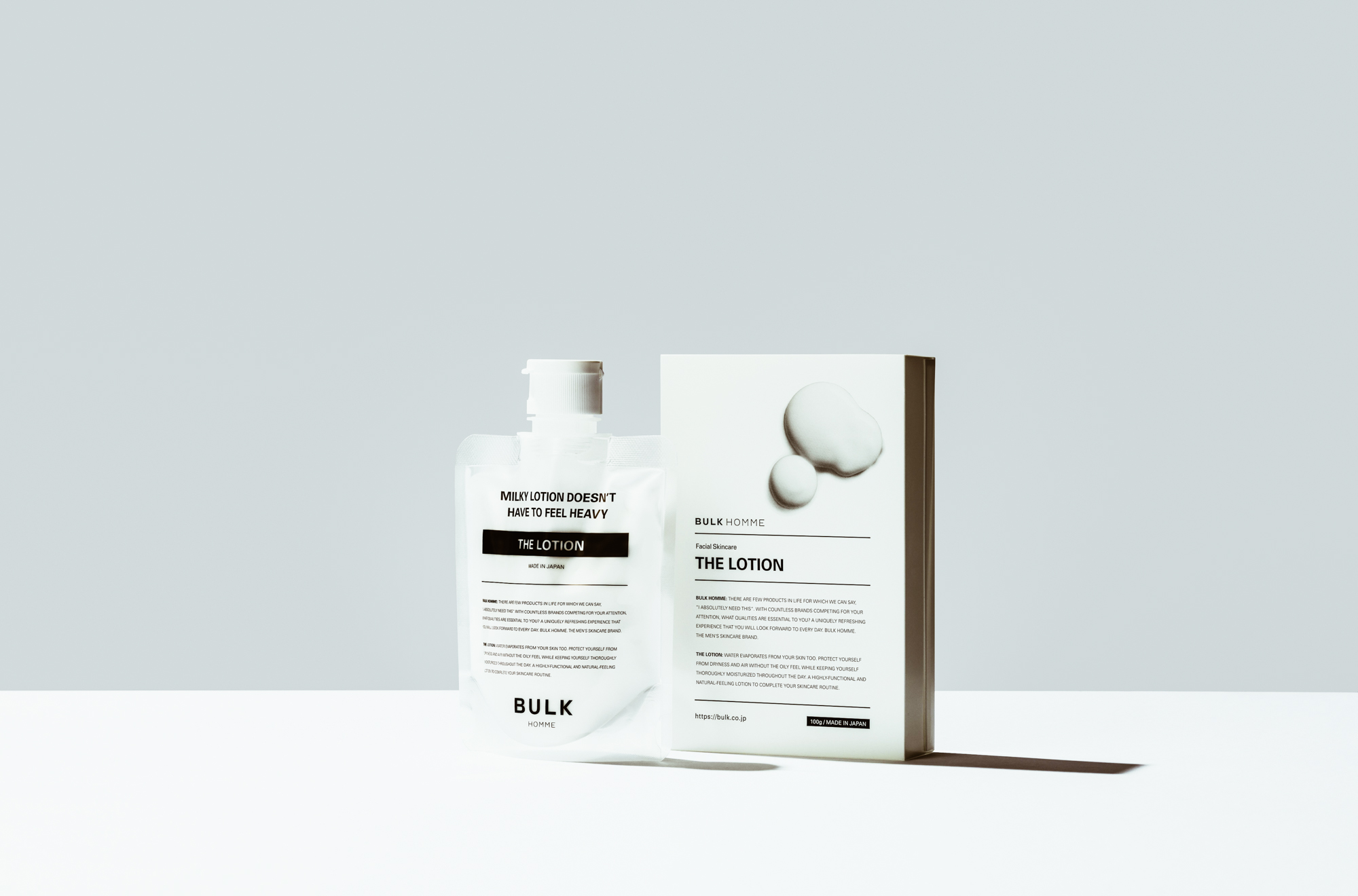
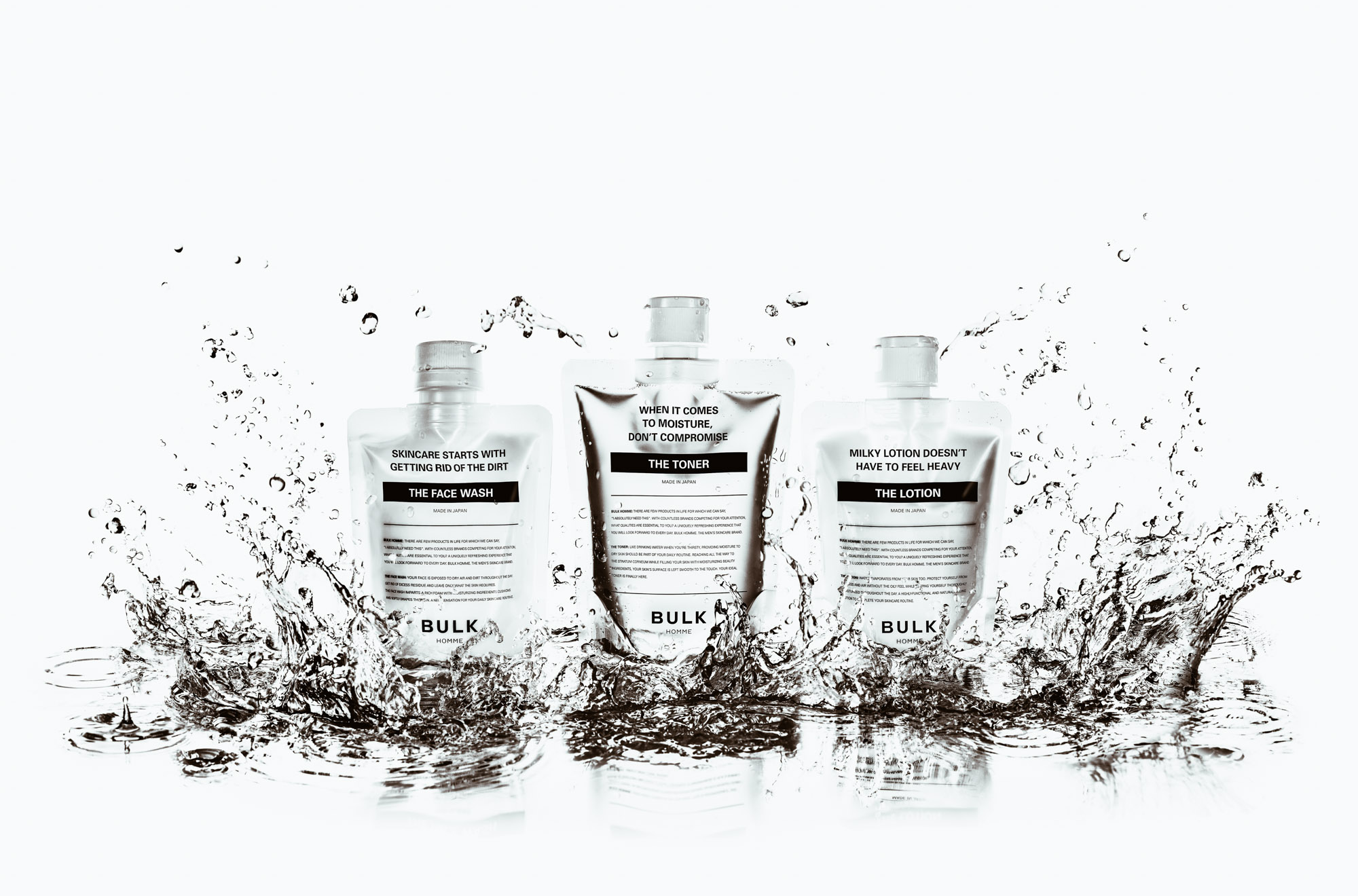
Would you like to try these wonderful products for free? Do you want to see them and touch them for real? BULK HOMME promotes its new products through a product testing in TENOHA & SHOP open to all customers!
Don't miss out, we are waiting for you!
when: 26 & 27 September | Morning > 11:00 - 13:00 | Afternoon > 15:00 - 19:00
where: TENOHA & | SHOP c/o TENOHA MILANO — Via Vigevano, 18, 20144 Milano
CHAPTER #3 - SHIBUI | Facial treatment with Japanese products with the founder of Shibui Italia, Raffaella Grisa
"I treat the outside and I cure the inside" is the motto on which personal care is based according to Raffaella Grisa: it is important to take care of one's inner being in order to make the outer beauty appear. We will start with total relaxation by tasting an infusion created with the jetu leaf (an essential element of Ruhaku's cosmetics line) that will help us purifying the inside.
The real workshop will start with the specialist of J-beauty Lorena with a meditative moment thanks to HITO, a special fragrance that heals the soul and balances the chakras. Only after purifying the soul, we will move on to the care of external beauty.
Do you want to dedicate a moment of pure well-being, inside and outside, away from everything that weighs down your person? This workshop will allow you to do it! Do not miss this opportunity and treat yourself with a day just for you!
Of course, the products are also available in TENOHA &|SHOP.
when: 7 November
# 1 session 10:30 – 12:00
# 2 session 14:00 – 15:30
# 3 session 16:00 – 17:30 (only if there are other requests)
where: TENOHA & | WORK c/o TENOHA MILANO — Via Vigevano, 18, 20144 Milano
Cost: 40€
Seats: 10 per session
CHAPTER #4 - DOTERRA | Treatment with essential oils with Marcella Mosci
Every day we are subjected to stress and hectic, due to work and personal problems. Don't you think it's time to stop for a moment to seek some peace and balance? . With essential oils we can do it easily and quickly! In this workshop we will create for you a bio beauty routine depending on your skin with creams and essential oils. The olfactory experience guided by essential oils, will teach us their recognition and the choice of the most suitable product for our skin.
But what exactly is DoTerra? Founded in 2008, DoTerra (from a Latin expression meaning "gift of the earth") was born with the mission to spread the benefits of essential oils with CPTG (Certified Pure Therapeutic Grade®) certification, which stand out for the highest standards of quality, purity and safety in the entire industry. Together with traditional and alternative medicine professionals, it encourages studies and applications of therapeutic grade essential oils in modern healthcare practices. DoTerra has also developed the Co-Impact Sourcing initiative, through the Healing Hands Foundation, which enables sustainable exploitation of resources for oil production, support of local communities and development of social responsibility projects.
when: 21 November
#1 session 10:30 – 12:00
#2 session 14:00 – 15:30
where: TENOHA & | WORK c/o TENOHA MILANO — Via Vigevano, 18, 20144 Milano
Cost: 40€
Seats: 10 per session
What are you waiting for? The moment to dedicate to yourselves has arrived! We are waiting for you!
TENOHA &| WORKSHOP: Kintsugi
Another appointment not to be missed at TENOHA Milano, which returns to propose the Kintsugi workshop, after the great success of the previous edition!
Kintsugi workshop with Mariangela Zabatino and Raffaella Nobili
Author: SaiKaiAngel
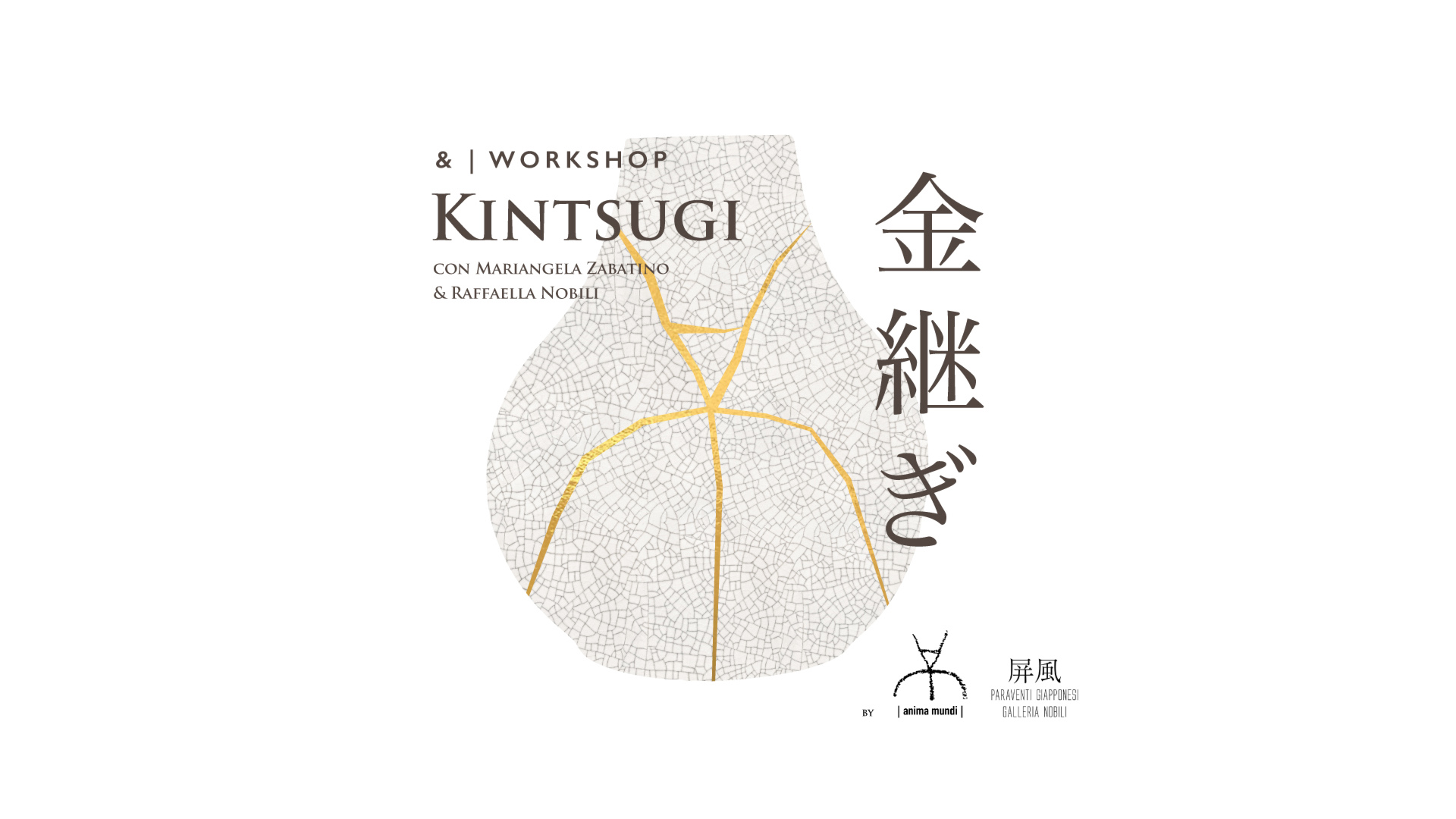
Another appointment not to be missed at TENOHA Milano, which returns to propose the Kintsugi workshop, after the great success of the previous edition! Mariangela Zabatino from Anima Mundi, with the collaboration of Raffaella Nobili from Japanese Paraventi, will bring you to the calm and the right concentration that only the Kintsugi technique can give.
To refresh your mind, here is what this technique is about: The kintsugi (金継ぎ), or kintsukuroi (金繕い), literally "repair with gold", is a Japanese practice that consists in using gold, liquid silver or lacquer with gold powder for the repair of ceramic objects. The technique allows to obtain precious objects especially from an artistic point of view. The idea is to demonstrate that from imperfection and a wound can arise an even greater form of aesthetic and inner perfection. From every fragment, from every wound something important is born, from every imperfection can arise a new perfection and a new way of living. We must always learn from mistakes and fractures, so that they can never happen again. The art of kintsugi is often used as a symbol and metaphor of resilience.
Kintsugi is an essential experience for body and mind. Do not miss this opportunity and come to understand the true meaning of "rebirth", obviously always here at TENOHA Milano, the real corner of Japan in Italy!
Click the following link to book your seat!
BOOK NOW
Details
When: October 4, 2020
10:30 -10:50 start of the course and introductory notes on Kintsugi through slide projection
10:50 -12:30 am -12:30 pm course with the repair of two ceramics
Where: TENOHA & WORK
TENOHA MILANO - Via Vigevano, 18, 20144 Milan
Cost: 75€ per pax
Pax: Minimum No. 7, Maximum No. 13
Click here for more info:
https://workshops.tenoha.it/
Johanna Tagada Hoffbeck @ TENOHA Milano
TENOHA Milano is proud to present Memories from the Ordinary, the first exhibition in Milan of Johanna Tagada, French artist who lives and works between London and the Alsatian countryside.
MEMORIES FROM THE ORDINARY Johanna Tagada Hoffbeck
Author: SaiKaiAngel
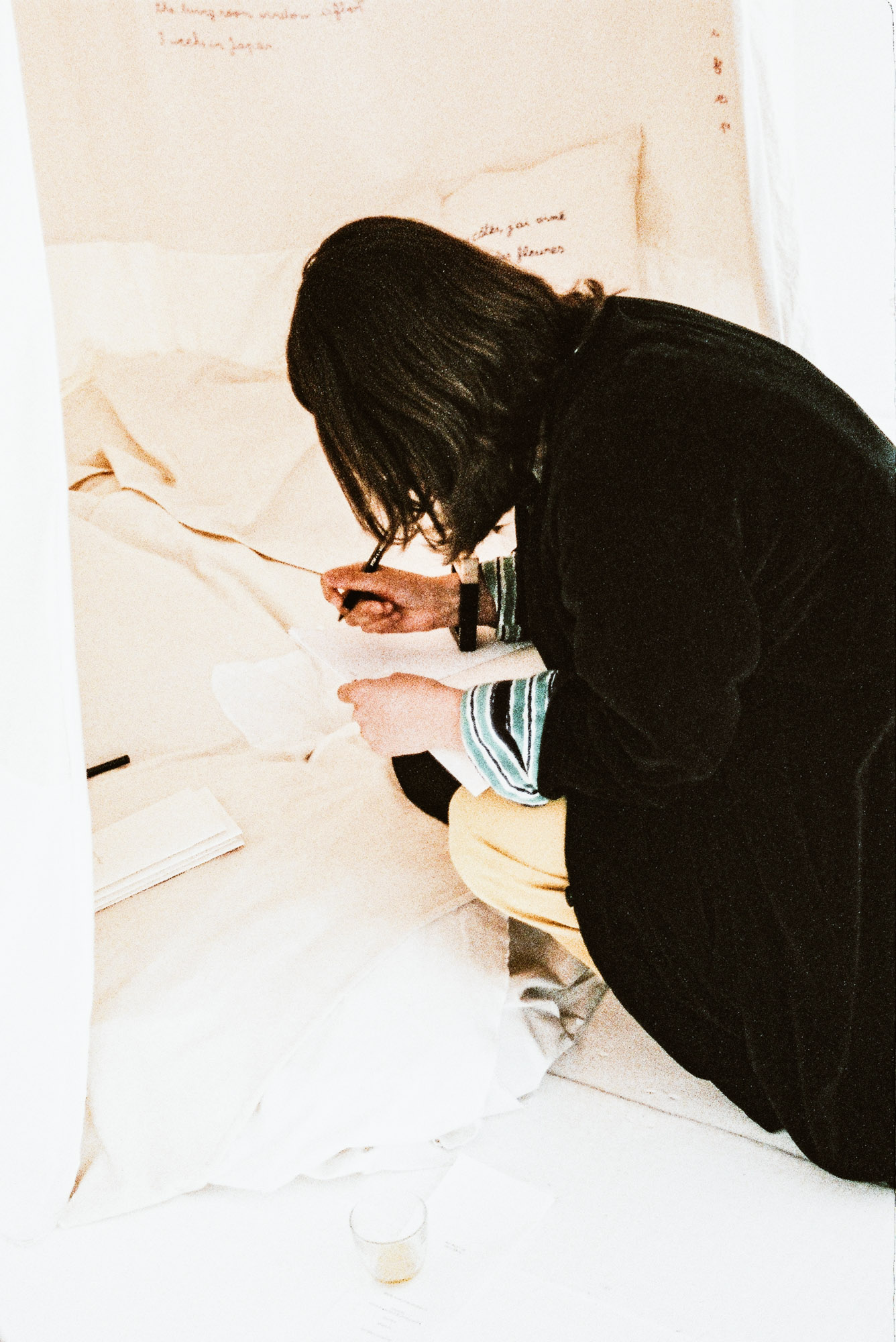
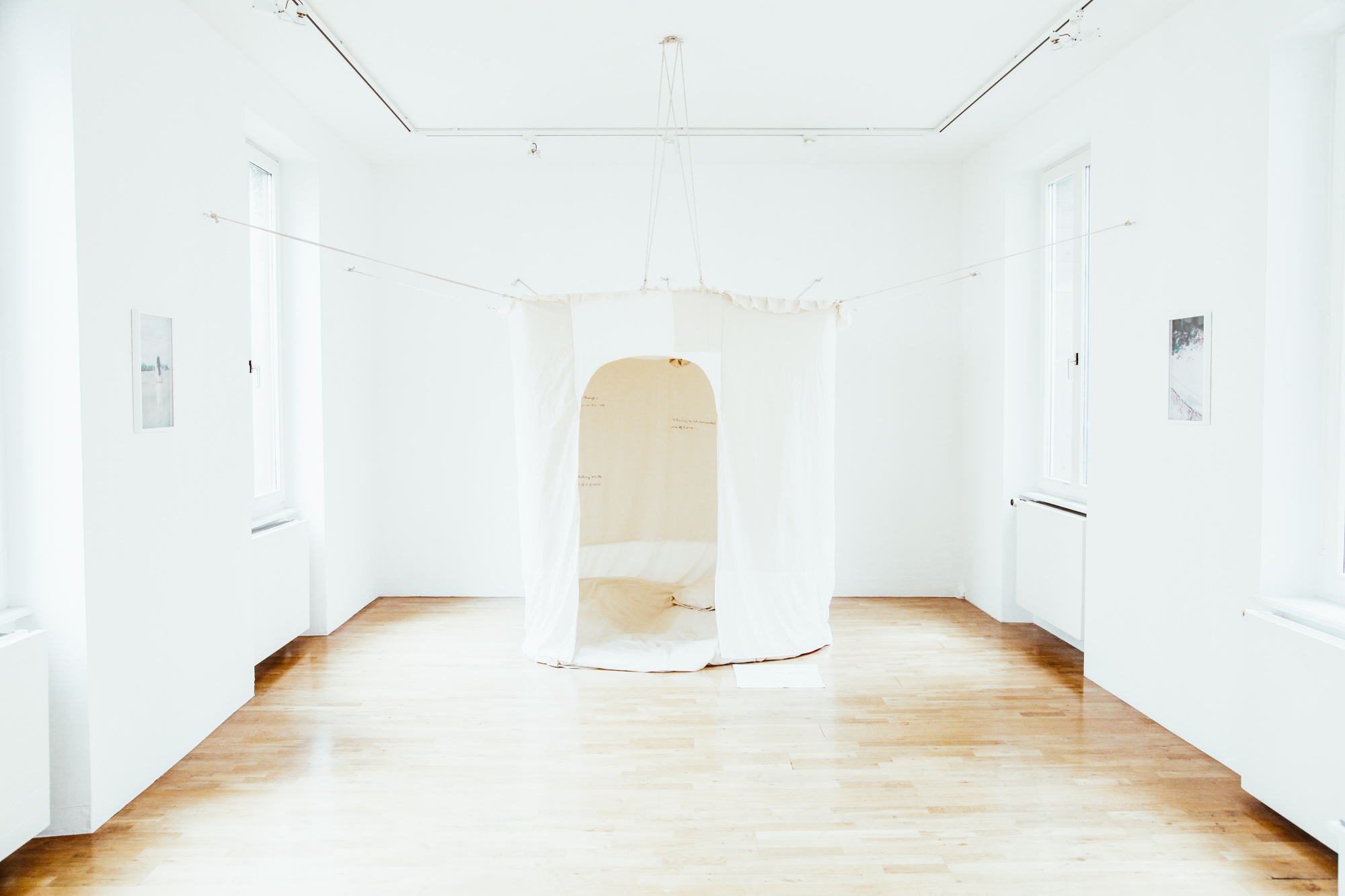
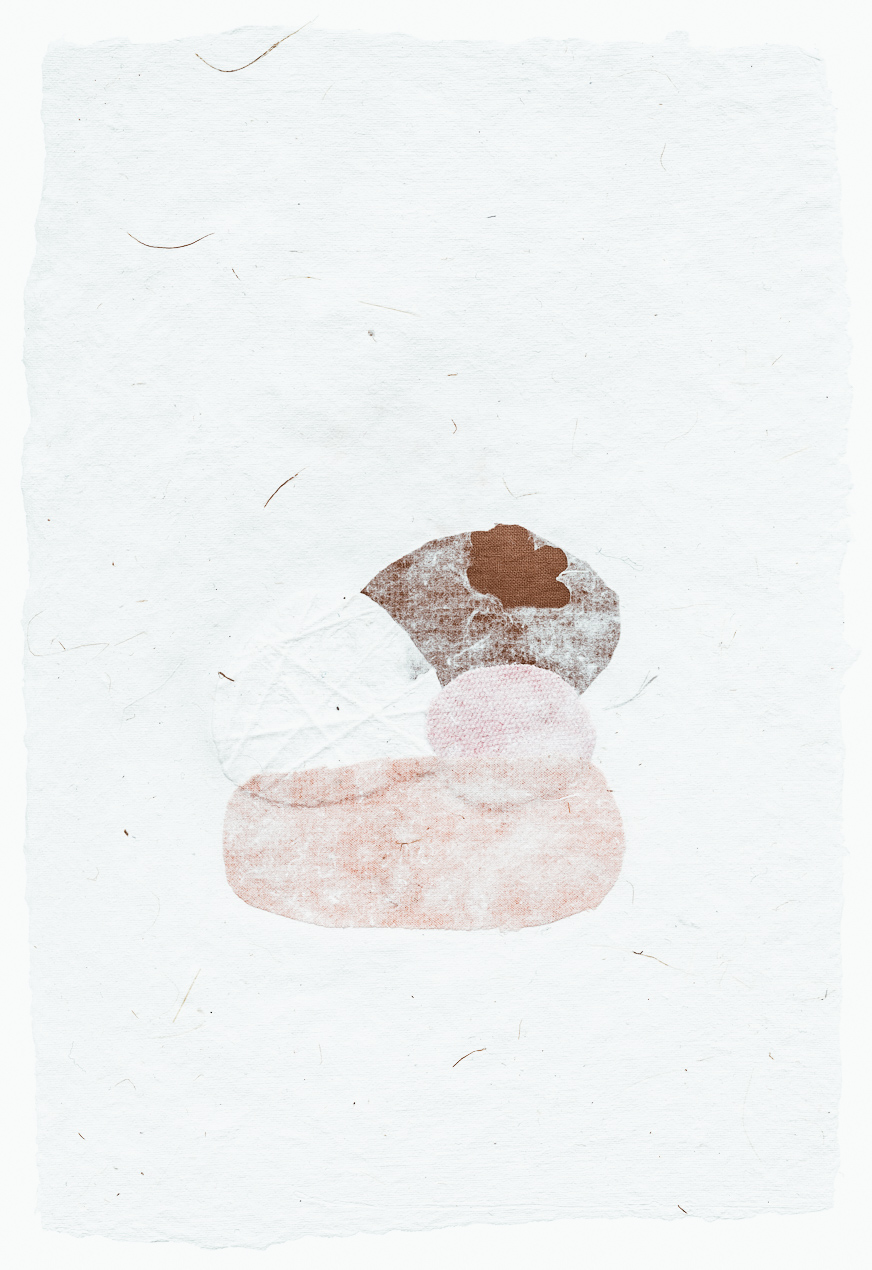
Memories from the Ordinary, curated by Giulia Giazzoli and Joel Valabrega, will be at your disposal in the pop-up spaces of TENOHA Milano. The works range from painting to drawing, and from the collage to textile design and… listen!! In the preview, Johanna Tagada will also exhibit two unpublished works from his series Gestures of Love! An appointment not to be missed.
Gestures of Love
According to the artist, life resides in moments of simplicity, of positivity, in a society that never stops to enjoy these beauties.
His work has a great recognizability: the meticulous choice of color palette carefully studied, the selection of materials and textures that often precedes the work. The soft colors, soft shapes and sustainable materials and we are talking about organic cotton fibers, recycled paper and natural colors. Johanna Tagada's idea of ecology finds its foundation in the deep ecology of Arne Naess, Norwegian philosopher and mountaineer who first used the term ecosophy.

Daily-Practice
Let's take a few examples: in the Tea Vessels series, Johanna Tagada depicts objects related to tea culture in a maximum of twenty minutes, exactly the time of a cup of tea. This is an example of how everyday life can be complemented by meditation, which we carry out in all our daily gestures. The theme of memory emerges strongly in the installation Le Refuge (2016). La Refuge is a large cotton tent inside which Johanna Tagada hand embroidered sentences collected from visitors during her project Épistolaire Imaginaire (2014-2017).
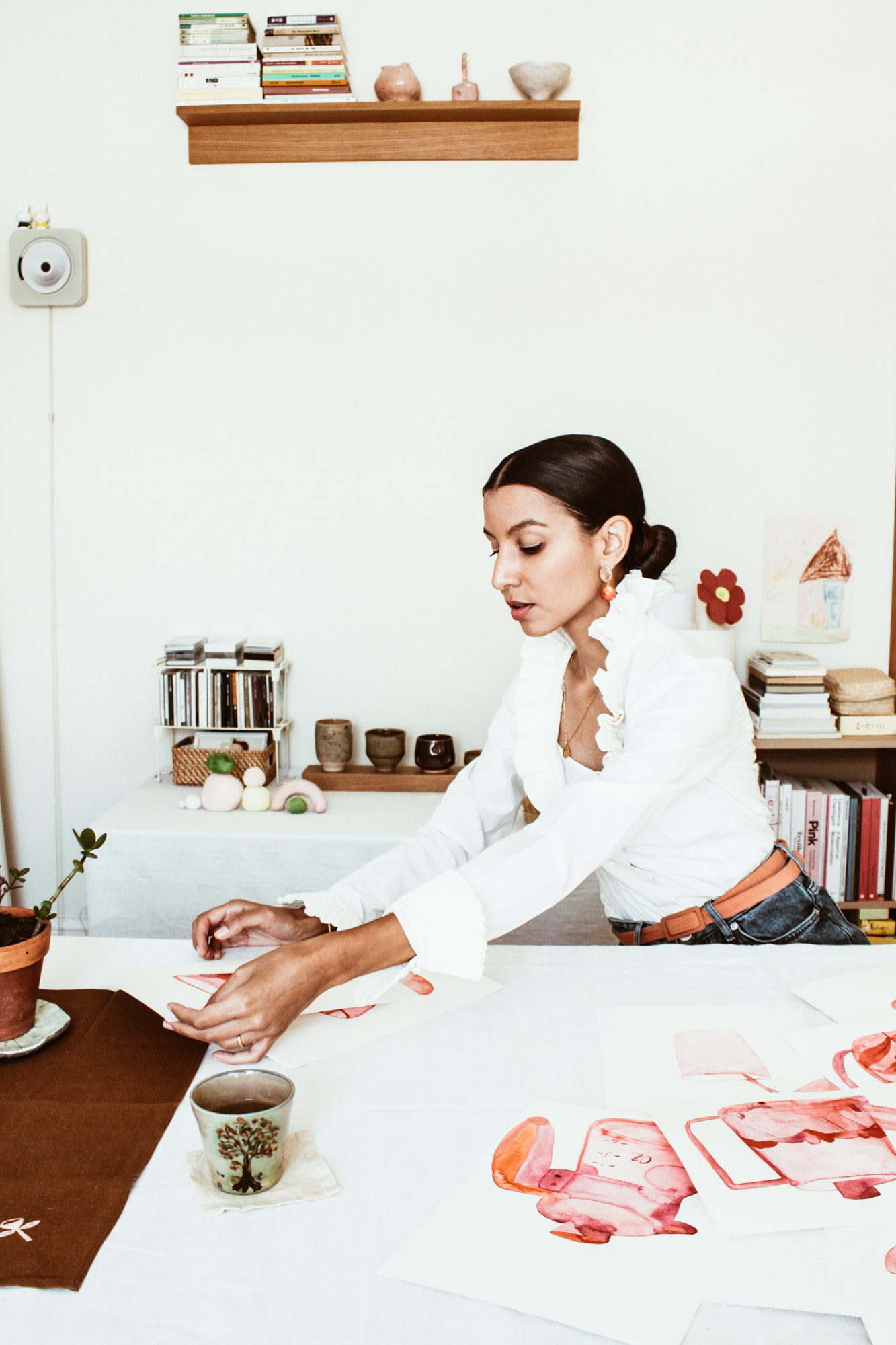
Le Refuge
We are talking about a very lively and prolific artist and she has already had a series of solo exhibitions in London, Los Angeles, Tokyo and Strasbourg, in particular:
Strasbourg - Épistolaire Imaginaire - Merci alla Galerie Jean-Francois Kaiser by
Nidi Gallery Tokyo - Take Care - きをつけて.
In 2014 Johanna founded the positive and collaborative cultural project Poetic Pastel. Her continuous research for art also resulted in publishing: in 2018 she co-founded the independent magazine "Journal du Thè" and since 2014 she has been creating "positive and participatory" cultural projects with Poetic Pastel Press. Some of her incredible publications will be on sale in the TENOHA store.
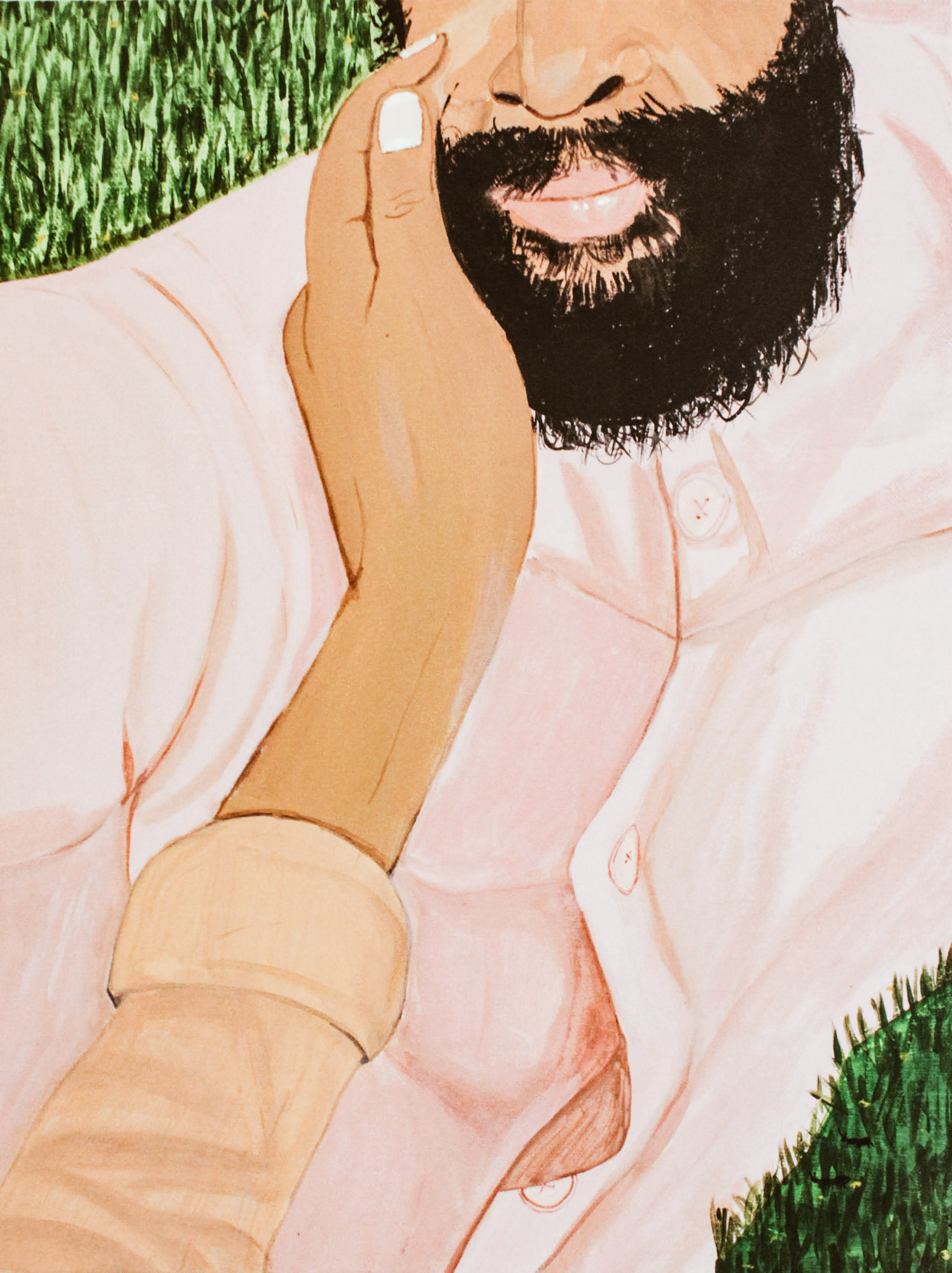
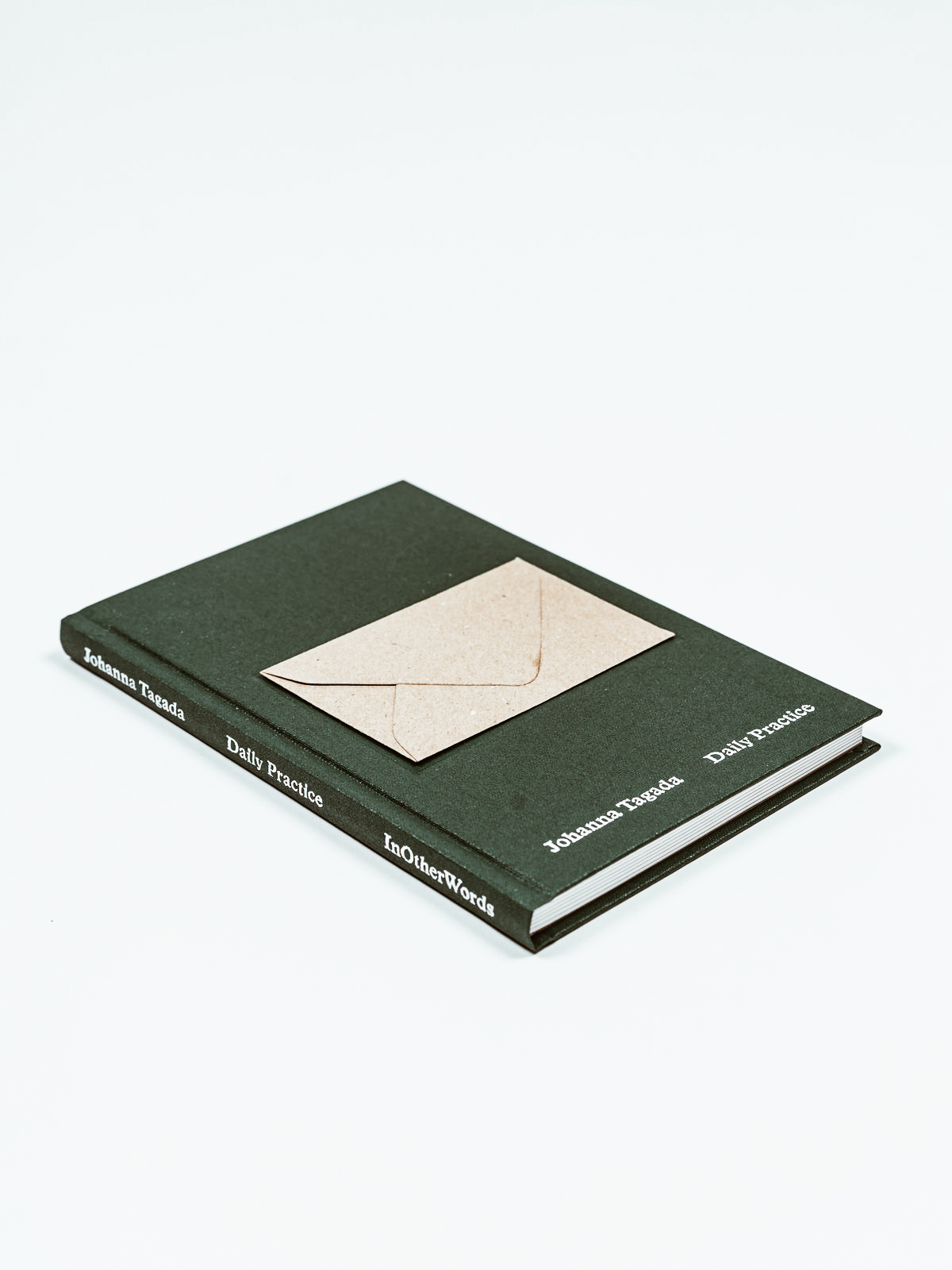
To marry everyday life with art, to respect the artist's feelings and to spoil visitors as always, organic teas and infusions will be offered during the exhibition in collaboration with Wilden Herbals Tea.
You cannot miss this opportunity and this unique and sensory experience!
Dettagli
Where: TENOHA MILANO – Pop-up space, Via Vigevano, 18, 20144 Milano
When: Dal 9 al 18 settembre 2020 dalle ore 15 alle 21
In collaboration with: TENOHA MILAN
Technical sponsor: Wilden Herbals Tea
Contacts:
Giulia Giazzoli giazzoligiulia@gmail.com
Joel Valabrega joel.valabrega@gmail.com
Movie week @ TENOHA Milano
The great events of TENOHA Milano are back with the STUDIO GHIBLI movie marathon in the MOVIE WEEK! What could be better than these wonderful movies together with the only aperitifs of TENOHA Milano? But let's take a closer look at what Studio Ghibli is.
Marathon Studio Ghibli in TENOHA Milano
Author: SaiKaiAngel
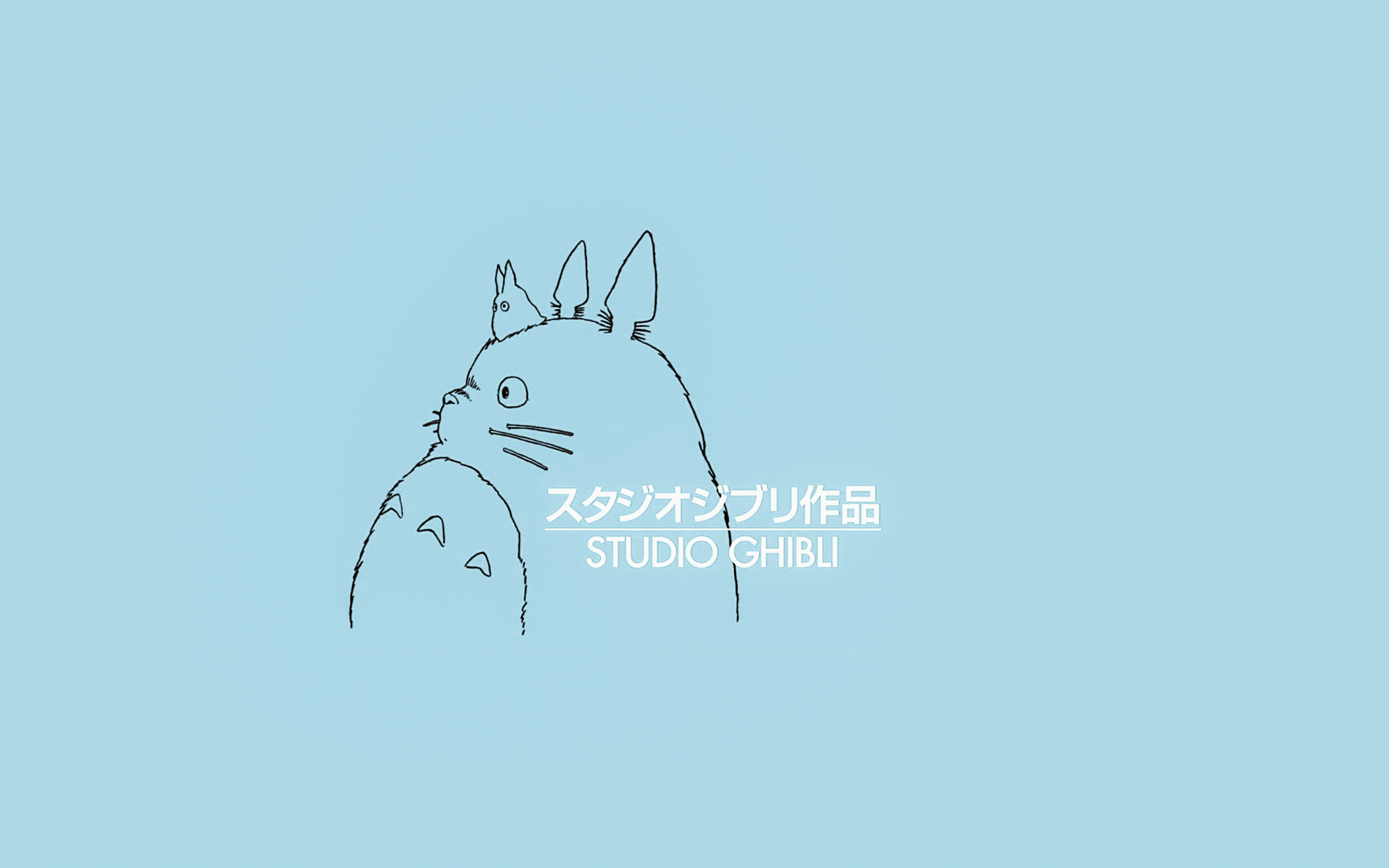
Studio Ghibli, Inc. is a Japanese animated film studio. Its anime is known and appreciated throughout the world.
Founded in 1985 by the famous director Hayao Miyazaki together with his colleague Isao Takahata, it was originally founded in 1983 with the beginning of Nausicaä in the Wind Valley (1984), previously serialized in 1982 as a manga by Tokuma Shoten.
"Ghibli" is the name of a hot wind used by Italian pilots in North Africa in World War II and their reconnaissance airplanes. Hayao Miyazaki, who has always had a passion for old aircraft, decided to use this word as a name for the new studio with the phrase: "Let's blow a hot wind in the world of Japanese animation!”
Movie Schedule
Howl's Moving Castle
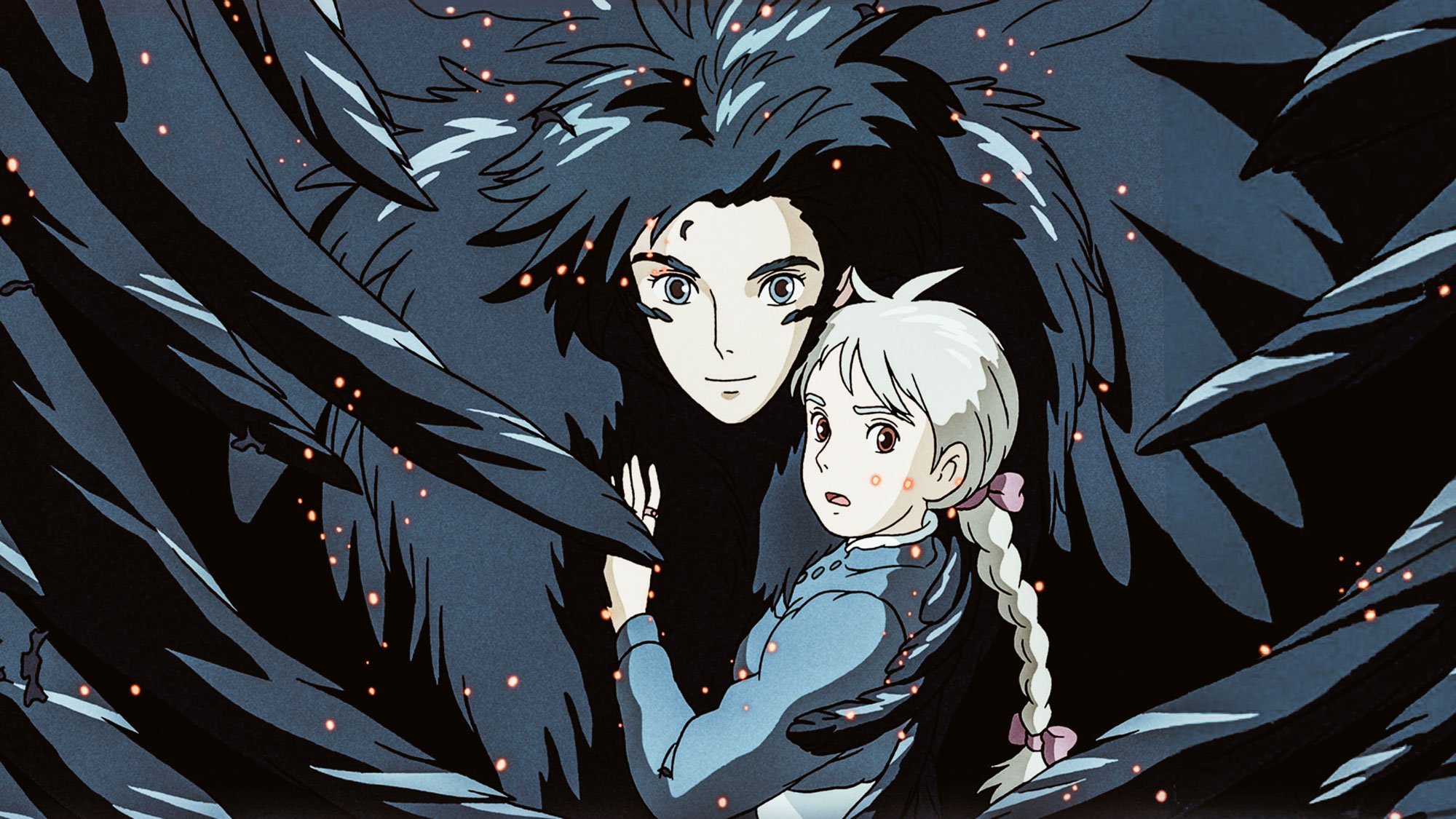
• 18 September 2020 - The Wandering Castle of Howl - ハウルの動く城 (2004)
Young Sophie, 18, works tirelessly in the hat boutique that belonged to her father. During one of her rare outings in the city, she met Howl the Magician. Misunderstanding their relationship, a witch casts a terrible curse on Sophie and turns her into a 90-year-old woman. Prostrate, Sophie flees and wanders the wastelands. By pure chance, she enters Howl's Wandering Castle and, hiding her true identity, gets hired as a cleaning lady. This "old lady", as mysterious as she is dynamic, will soon manage to give new life to the old dwelling inhabited only by a young apprentice, Markl, and the one who runs the Castle, Calcifer, the fire demon. More energetic than ever, Sophie performs miracles. What fabulous fate awaits her? What will happen between her and Howl?
Sen to Chihiro no kamikakushi
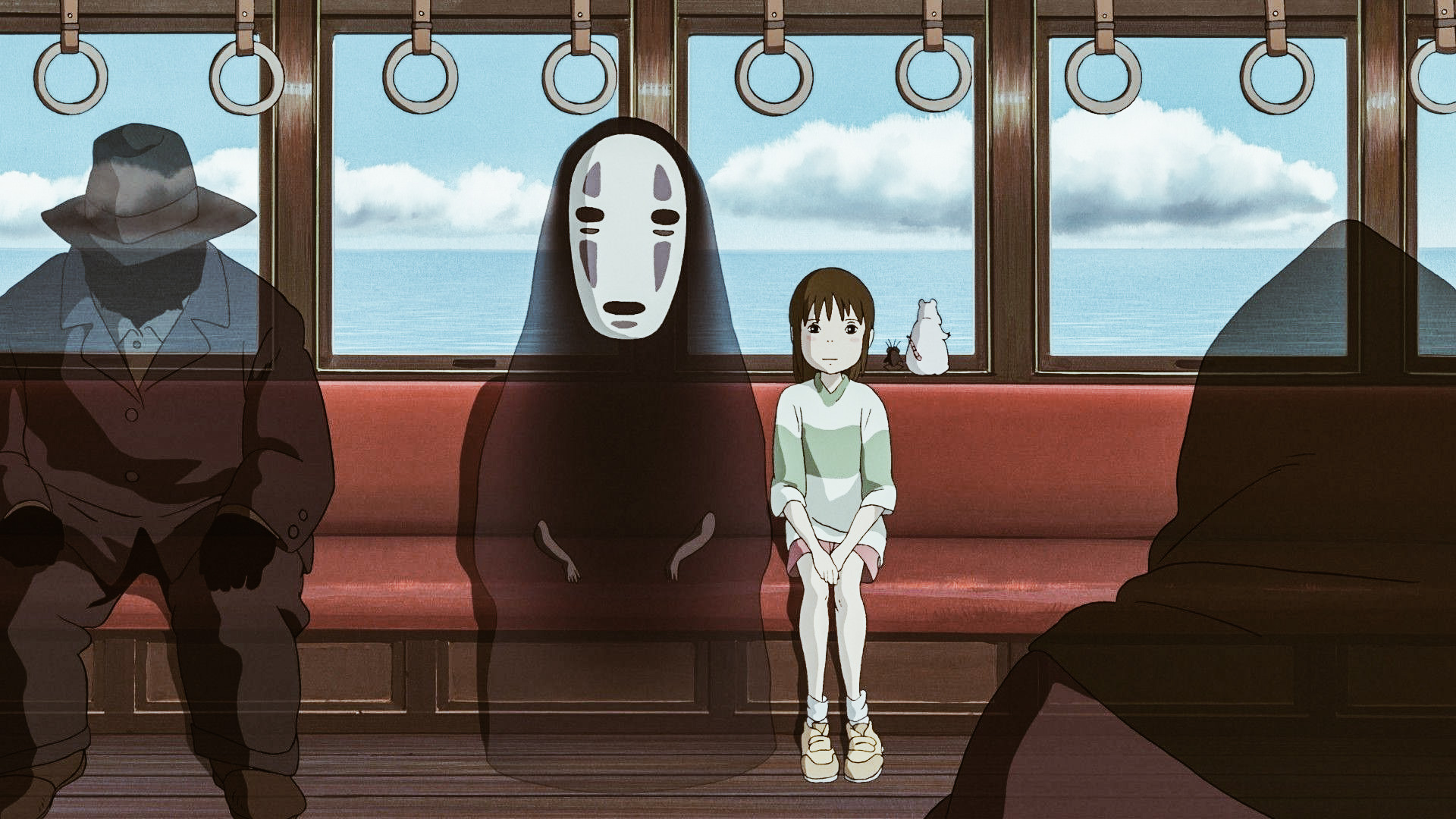
• 19 September 2020 - The Enchanted City - 千と千尋の神隠し (2001)
Chihiro, a 10-year-old girl, and her parents are moving when the girl's father takes the wrong road. Thinking he has found an abandoned amusement park, the father enters the complex to visit it, followed by his wife and, reluctantly, Chihiro. The three of them cross the bed of a dry river and find themselves in a city composed entirely of restaurants and clubs, and on a counter they find a rich buffet. Parents sit down and start eating, thinking they will pay when someone shows up. Chihiro meanwhile explores the area and finds a large spa complex. A young boy, Haku, orders her to leave, but on her way back she discovers that her parents have become pigs and that she can't cross the flooded river.
Kaze no tani no Naushika
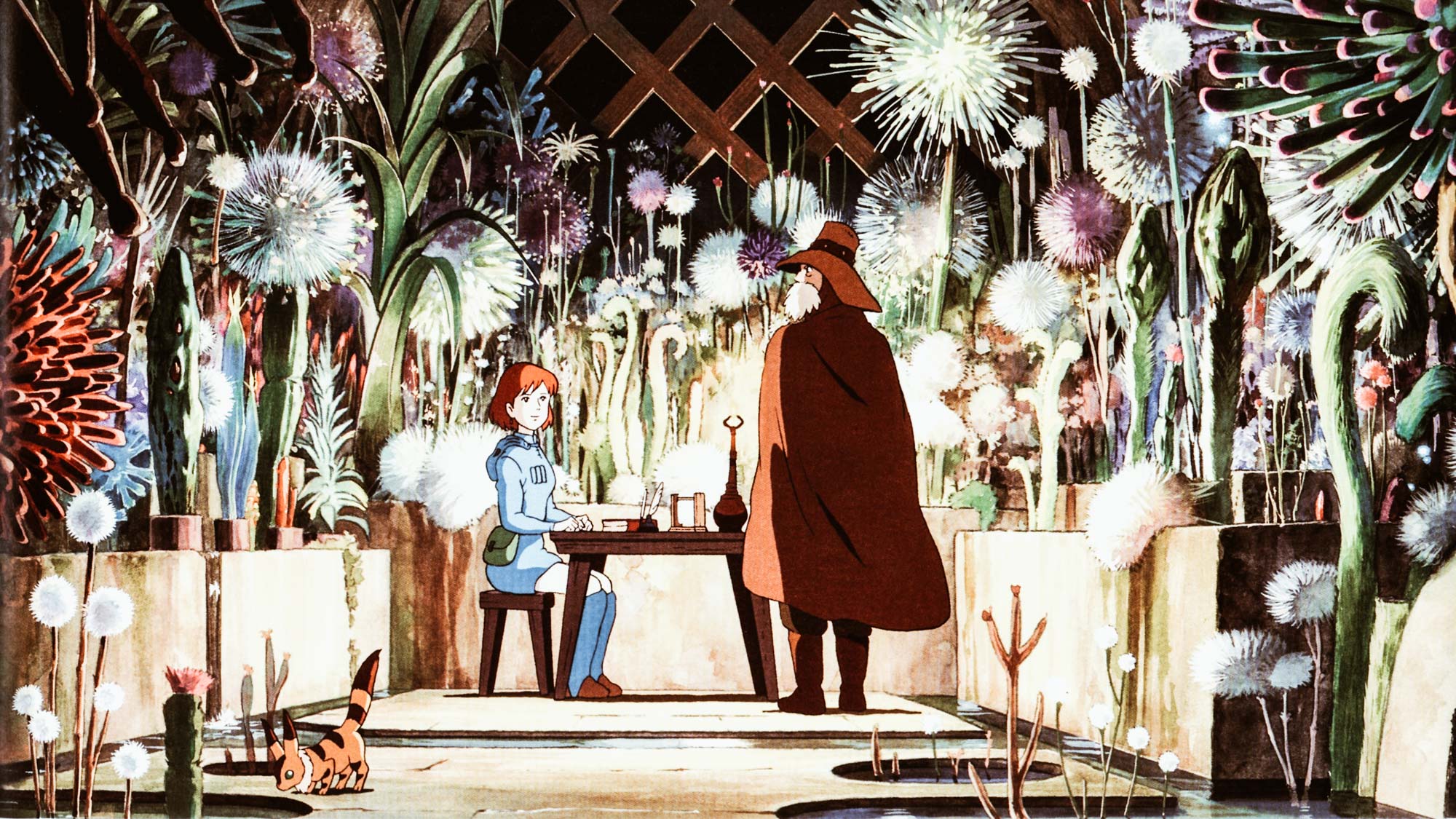
• 20 September 2020 - Nausicaä in the Wind Valley - 風の谷のナウシカ
Following a cataclysm that devastated the entire planet, a toxic forest covered most of the Earth's surface. In this apocalyptic scenario, where a new war is about to explode, the kingdom of the Wind Valley - ruled by Jihl, father of the brave Princess Nausicaä - is one of the few areas still populated. Nausicaä has two gifts: being able to ride the wind flying like birds and being able to communicate with the Ohm, the giant insect guardians of the forest. Thanks to her skills and the love and esteem of her people, Princess Nausicaä will undertake a courageous challenge to restore peace and reconcile humanity with the Earth.
Details
When: September 18 - 19 - 20
Aperitif from 18:00 to 20:00
Screening from 18:00
Where: & | DISCOVER, TENOHA MILANO via Vigevano 18, 20144 Italia
Cost: special aperitif € 12 + free entry to the cinema
Seats: 20 Max (subject to availability)
Shinrin-yoku, forest bathing
The Shinrin-yoku so loved by the Japanese is what we call "forest bathing" and can be healing and regenerating. This practice, whose major exponent is Dr. Qing Li of the Nippon Medical School in Tokyo, is also becoming very famous here in the West. But let's see in detail what it is.
Shinrin-yoku, the forest bathing loved by the Japanese
Author: Erika | Source: Tokyo Weekender
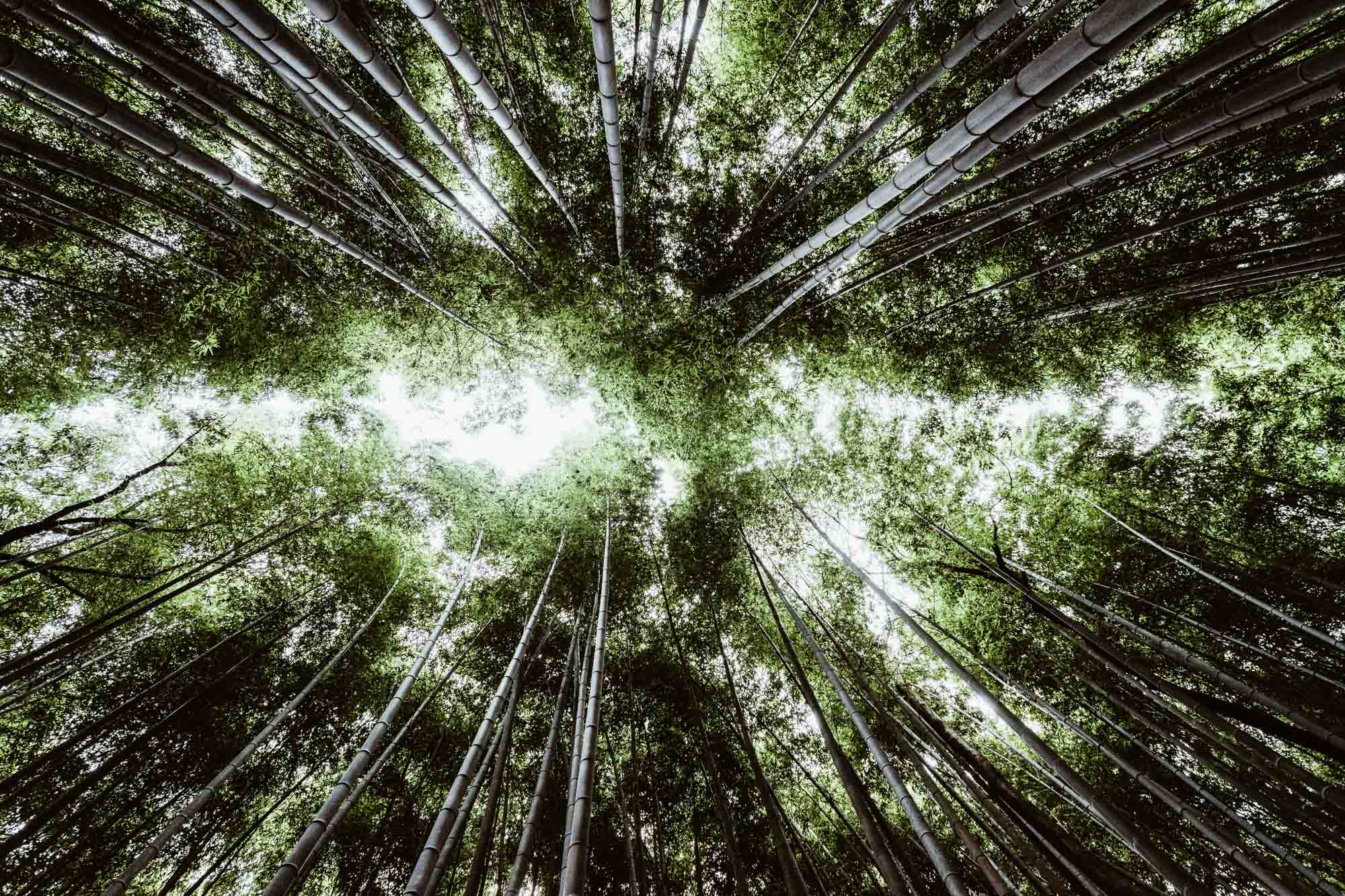
One of the world's biggest health trends at the top of the charts, the Shinrin-yoku has become internationally renowned. However, its diffusion dates back to the late 1980s in Japan. In fact, Forest Bathing has for years been considered a true practice of preventive medicine in the land of the Rising Sun. In support of this, there are numbers of researches conducted around the world that have shown how to spend regular periods of time immersed in the quiet of the woods helps to strengthen the immune defences and prevent diseases But what exactly is this about?
What is Shinrin-yoku, Forest Bathing?
Literally, Shinrin-yoku (森林浴) combines the kanji of "forest" and "bath", and is commonly translated as "bath in the forest". Promoted some forty years ago by the Japanese government, Shinrin-yoku consists of walking in the woods and applying special breathing techniques. However, forest bathing activities are not limited to breathing. In fact, whether you stay active or simply decide to take some time to relax in the forest area, this also brings you back to this practice.
First used in 1982, this term was promoted by the Japanese Ministry of Agriculture, Forestry and Fisheries to encourage healthy lifestyles and protect the nation's beautiful natural ambients. Since 1986, the Forsetale Agency together with the Green Civilization Society has indicated more than 100 areas throughout Japan where this concept of bathing is possible. Even today, there are various techniques to keep healthy, but forest bathing is one of those concepts that goes well with Japanese ideology.
In the early 2000s, several universities and research centres conducted experiments to find out how effective this practice was. The various studies were unanimously positive. In fact, it has been shown how spending time between trees reduces stress, improves mood, lowers pulse rate and blood pressure. But not only that, it also increases concentration and creativity as well as strengthening our immune system.
Perhaps sensitivity, and in particular deeply spiritual and historical respect for the natural world, has made this practice thrive in this nation.
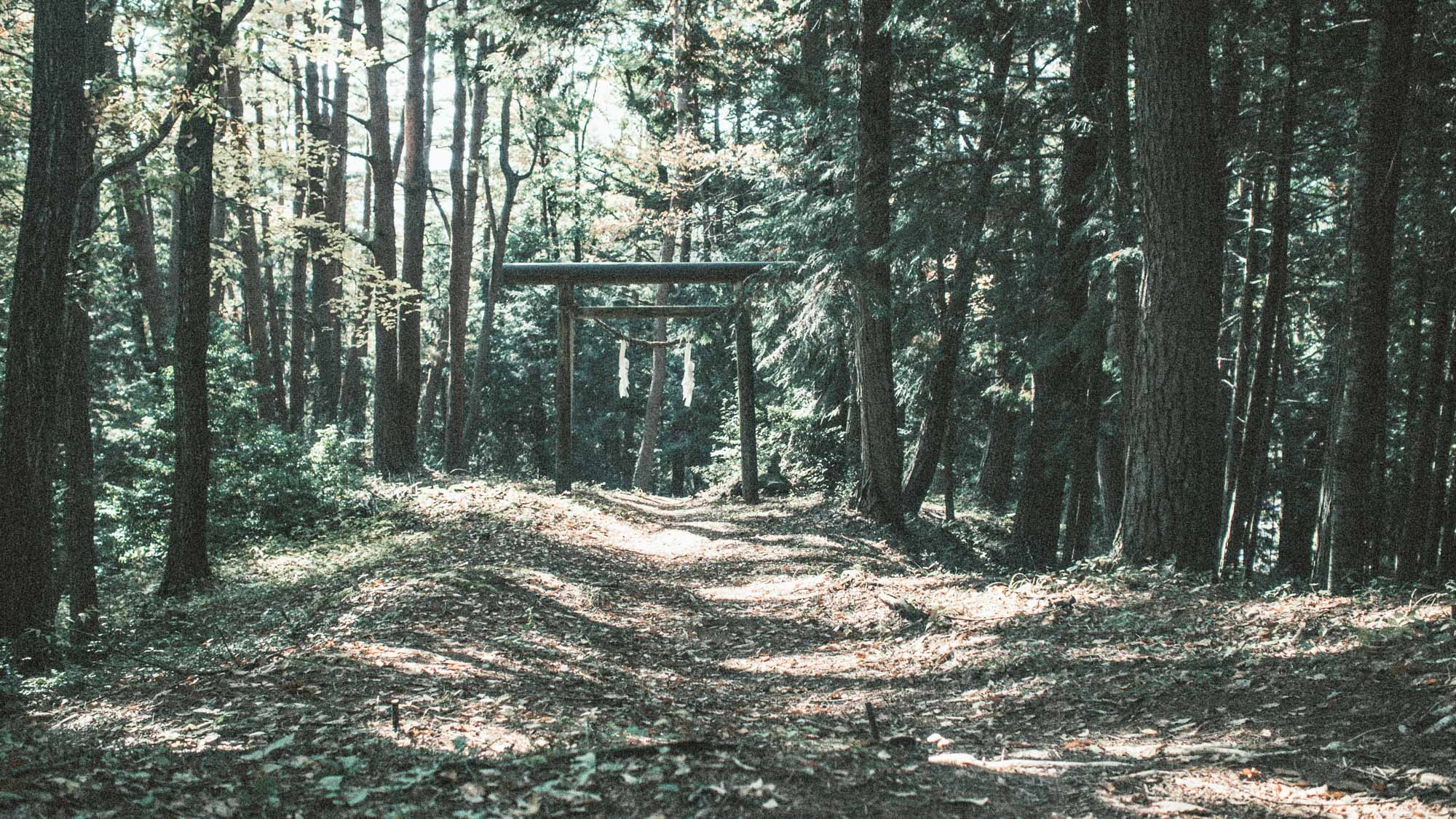
Forest Bathing becomes international
Following the strong success achieved in Japan (about 5 million people practice Shinrin-yoku in the country alone), forest bathing has also become very popular internationally. Today, in fact, it has many followers also in the West, the Duchess of Cambridge herself is a fan, as reported by The Guardian. In this regard, in England, many institutions are promoting this practice as a way to relieve daily stress.
One of the leading figures on the subject, Quing Li, president of the Society of Forest Medicine in Japan and author of the book Shinrin-Yoku: The Art and Science of Forest Bathing, commented:
"Shirin-yoku is for all intents and purposes a preventive medicine. People spend most of their lives indoors. In the case of the Japanese it is 80% of the time, and in the case of the Americans it is as much as 90%. But man is made to live outdoors. We are designed to be connected to the world of nature".
You have to try the Shinrin-yoku
Forest bathing is an easy and inexpensive activity. In fact, it can be done at any time, whatever the weather conditions and does not require special equipment or physical fitness. You can build your experience to measure and according to your needs.
In Japan, the Forest Therapy Society is a non-profit organization that identifies areas with forests and pedestrian roads that have been scientifically evaluated. Here you will find a certified "forest bathing effect". Currently, 62 areas have been certified in Japan, each of which offers "forest therapy roads" with wide access paths suitable for quiet walks, some of which are also wheelchair accessible.
In Italy, we find several destinations equipped for forest bathing, first and foremost Trentino Alto Adige. In fact, on the Renon plateau and in Fai Della Paganella, we find nature guides specialized in "balance excursions" and a "Parco del Respiro". It is precisely this region, in the last few years, has put a lot of emphasis on full immersion experiences in nature, including forest bathing.
But that's not all, also in Piedmont within the Zegna Oasis, we find three paths dedicated to forest bathing, which are unique in Europe.
Untranslatable words: Mono No Aware, Shakkei, Hikikomori, Omotenashi, Betsubara
It happened to everyone at least once to surf the internet and find articles about "untranslatable words". In fact, we often discover that every nation has special words with a certain meaning without any correspondence in its own language. Today we at Japan Italy Bridge want to try to summarize those special, unique and sometimes magical words that enclose an entire world.
Untranslatable words: Mono No Aware, Shakkei, Hikikomori, Omotenashi, Betsubara
Author: Sara
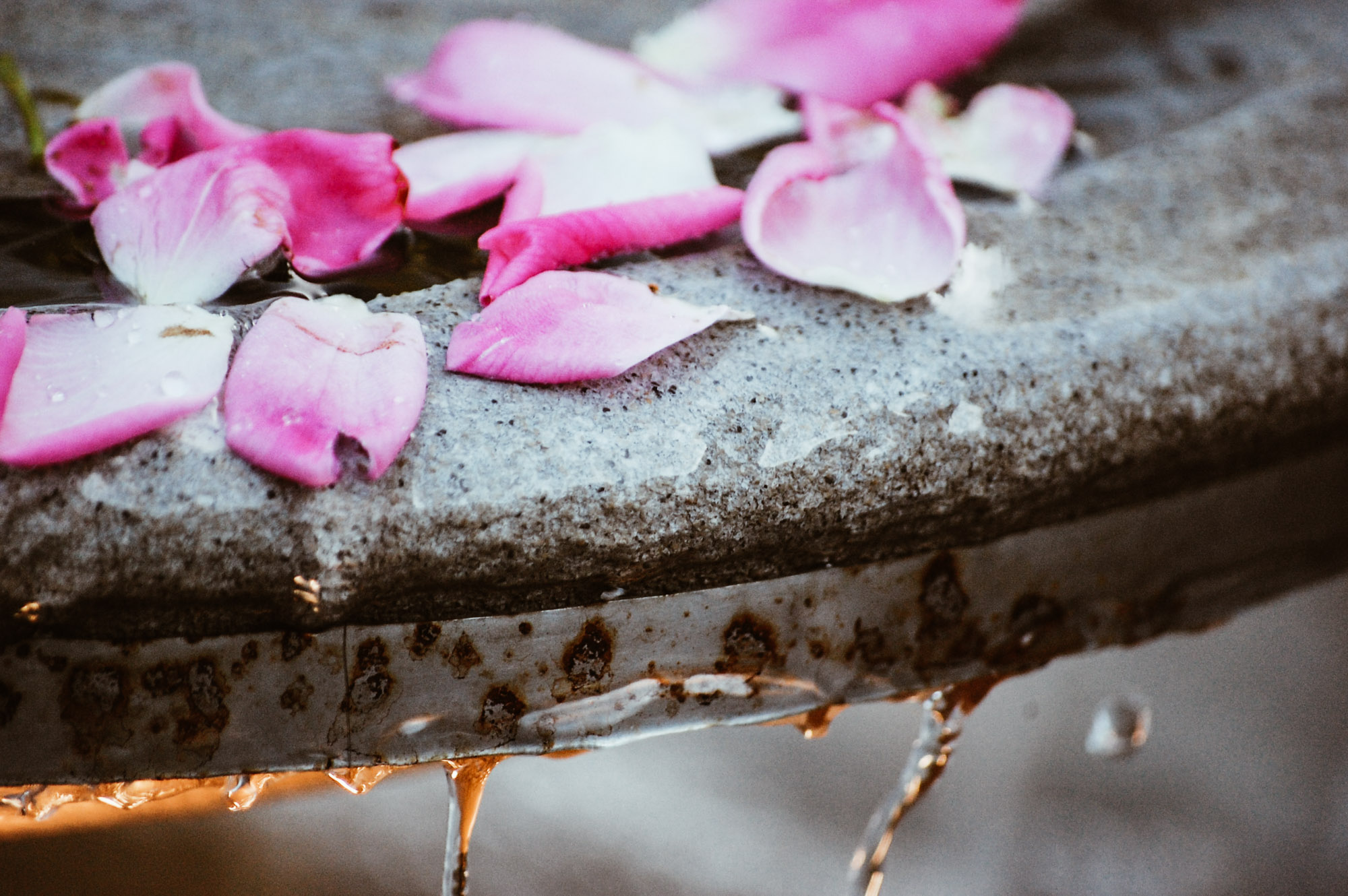
photo credits: Unsplash
Untranslatable words: Mono No Aware
The first on the list of our untranslatable words is 物の哀れ, "mono no aware". An aesthetic concept that expresses strong emotional participation in the beauty of nature and human life with a consequent nostalgic feeling linked to its incessant change. So literally we could translate it as "the pathos of things" or "the beauty of the ephemeral".
Mono no Aware finds its roots in the Heian period, but it spread only in the Edo period when the scholar Motoori Norinaga made a careful analysis and criticism of Murasaki Shikibu's "The Tale of Genji" defining it as a perfect example of "mono no aware", the perfect essence of Japanese culture. From this moment on, the creative path of many Japanese artists has had as its pivot this strange and complex concept. In fact, we find extremely sentimental the "transience" of things to take over, both in literary as well as cinematographic works. This leaves that feeling of "lack" for an ending that neither the reader nor the spectator is satisfied with. A sweet sadness and awareness that everything is destined to die slowly (and for this reason it must be loved deeply).
Shakkei
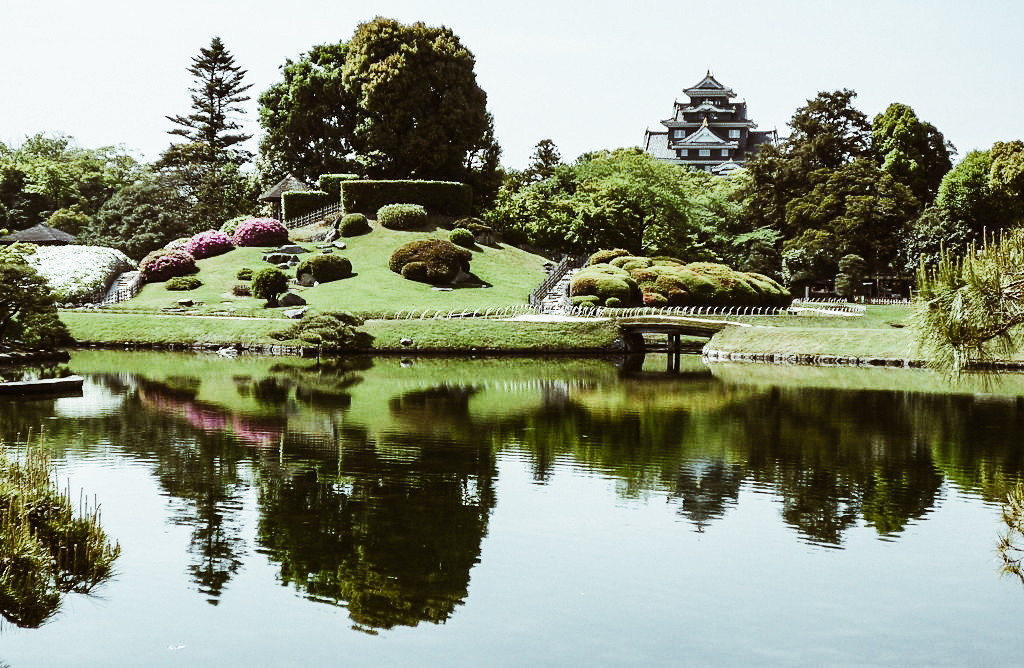
photo credits: wikipedia.org
The second expression we want to analyze is 借景, "shakkei". This time it is a particular technique literally defined as "landscape on loan", i.e. incorporating external elements of the landscape into the composition of a garden, the perfect fusion of the available elements already present with the surrounding aesthetics.
We could say that the whole of Japan refers to the concept of "Shakkei". Everything seems to be exactly in the right place in a harmonious and not shamelessly calculated and studied way. A sort of exaltation of nature as if even skyscrapers were an integral and perfect part of the whole landscape. In reality, however, this expression refers purely to the gardens of East Asia, which gives them the charm we know well. The principles of "borrowed landscape" have their roots in the Sakuteiteki (ancient Japanese gardening treatise), which developed further and further until it reached its maximum popularity during the Meiji and Taisho periods.
Hikikomori

photo credits: emefka.sk
The third word is perhaps among the best known and most "dangerous". We are talking about 引き籠もり, Hikikomori. Today it is a sad social phenomenon that can have extreme consequences and goes beyond mere "isolation". There are people who decide to voluntarily withdraw from social life, seeking extreme levels of loneliness by assuming a deleterious lifestyle both physically and psychologically. Night and day are reversed, direct relationships are often replaced by virtual ones or, in even more extreme cases, none at all. The hikikomori wanders around his room, devoid of any stimuli and this, as is intuitable, are characteristics that distinguish depressed subjects with obsessive-compulsive attitudes.
The first to give a name to this particular phenomenon was the psychiatrist Tamaki Saitō when he observed that the number of those who presented this deep lethargy towards life increased and the characteristics were always the same. Therefore, we can define Hikikomori as a syndrome rather than a word in itself.
Untranslatable words: Omotenashi

photo credits: livingnomads.com
The fourth on the list is お持て成し, "omotenashi". It is really difficult to find an equivalent that can even give an idea of this wonderful concept. We could use the word "hospitality", but it is almost reductive. This word expresses one of the most complex and profound aspects of Japanese culture. Omotenashi is the will to be attentive and take care of others. It also means to give importance to details, to be aware of one's own actions, to have the sensibility to seek harmony and to make others feel good. It was the Buddhist monk Sen no Rikyū who established the principles and good rules of conduct during the famous tea ceremony, an expression of the utmost care towards the guest.
There fore, Omotenashi is a reflection of Japan, the basis on which the behavioural etiquette of the entire country is rooted. Even if it is not said that this sense of "hospitality" is always encountered (the whole world is a country: there are also very unfriendly Japanese!), but you can easily perceive it when you experience it.
Betsubara

photo credits: lickthatspoon.blogspot.com
The last term we will address today is べつばら, "betsubara". It's a word that can make you smile and literally means "separate stomach." This is where all dessert goes when you say you can't eat another bite, but you eat it anyway. It's a bit like when you say, "there's always room for dessert" even though you already feel totally full. Obviously it can be understood for any food you have a weakness for: it can be ramen, sushi, pizza. So everyone has a different "betsubara"! Which one is yours?
Focus on: Nambu ironware
If we think of typical Japanese furniture, we immediately think of an iron teapot, also known as Nambu ironware.
The Nambu ironware and its history
Author: Erika | Source: Tokyo Weekender
Nambu Tekki, or Nambu ironware, is a specific method typical of the city of Morioka in Iwate Prefecture. Created in the middle of the Edo period, this art is named Nambu after the feudal domain of the same name. Modern techniques also use the molten metal produced near Morioka, in Sendai or the present-day town of Oshu.
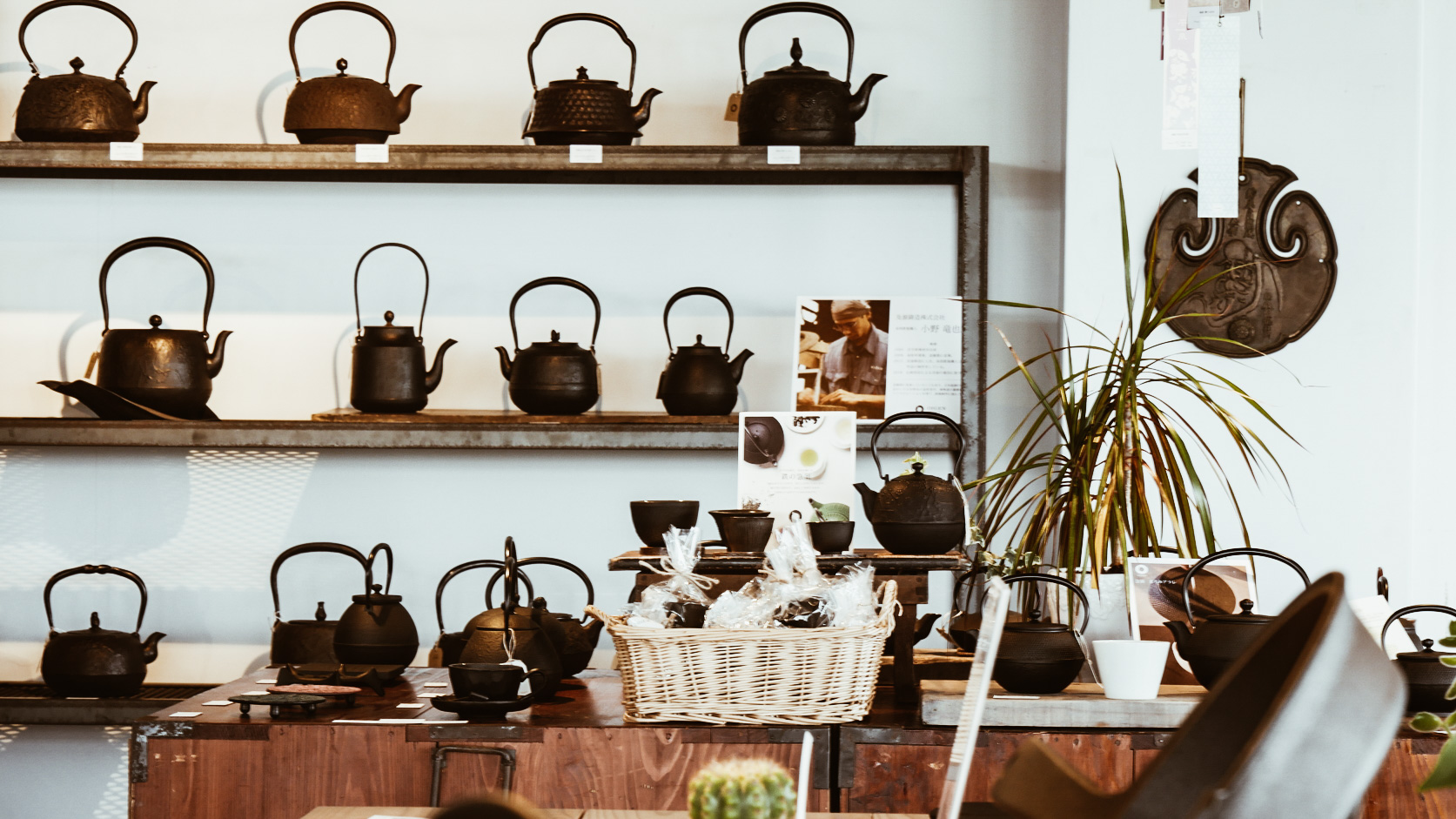
Rust-resistant, durable and well-insulated, these objects provide uniform heat circulation. In fact, the outside of the kettles has an irregular texture called ploughing or hail. This is often used in Nambu ironware dishes and kettles are the representative product. However, the various models change from artisan to artisan because each artist is free to create his or her own model at will.
The History of Nambu ironware
Nambu ironware products sink their history into the production of tableware for the Tea Ceremony during the homonymous domination in the middle of the 17th century. Thanks to the abundance of iron resources, Morioka was a perfect area for the foundry industry.
In fact, in 1659, a feudal lord who wanted to promote the tea ceremony ordered Nizaemon Koizumi to move to Kyoto. It was here, in the area around the castle in Nambu, that the kettles began to be made.
The Koizumi family
Craftsmen par excellence during the Nambu domain, this family launched for the first time the pots used for the tea ceremony. The tea casting technique and control were passed down from father to son. Not only traditional products, but this family was also the focus of innovations for the time. In fact, the famous Nambu Iron Kettle was invented by the third generation of the Koizumi family. The Taisho Emperor himself, who reigned from 1912 to 1926, visited the Tohoku region for this family. In fact, in 1908, on the occasion of the visit, the eighth generation of the Koizumi showed the emperor the production process of these iron tools. This event was so famous that all the national newspapers of the time talked about it. In fact, even today, all the pieces produced in the Morioka and Mizusawa areas in Iwate are still called "Nambu Ironware".
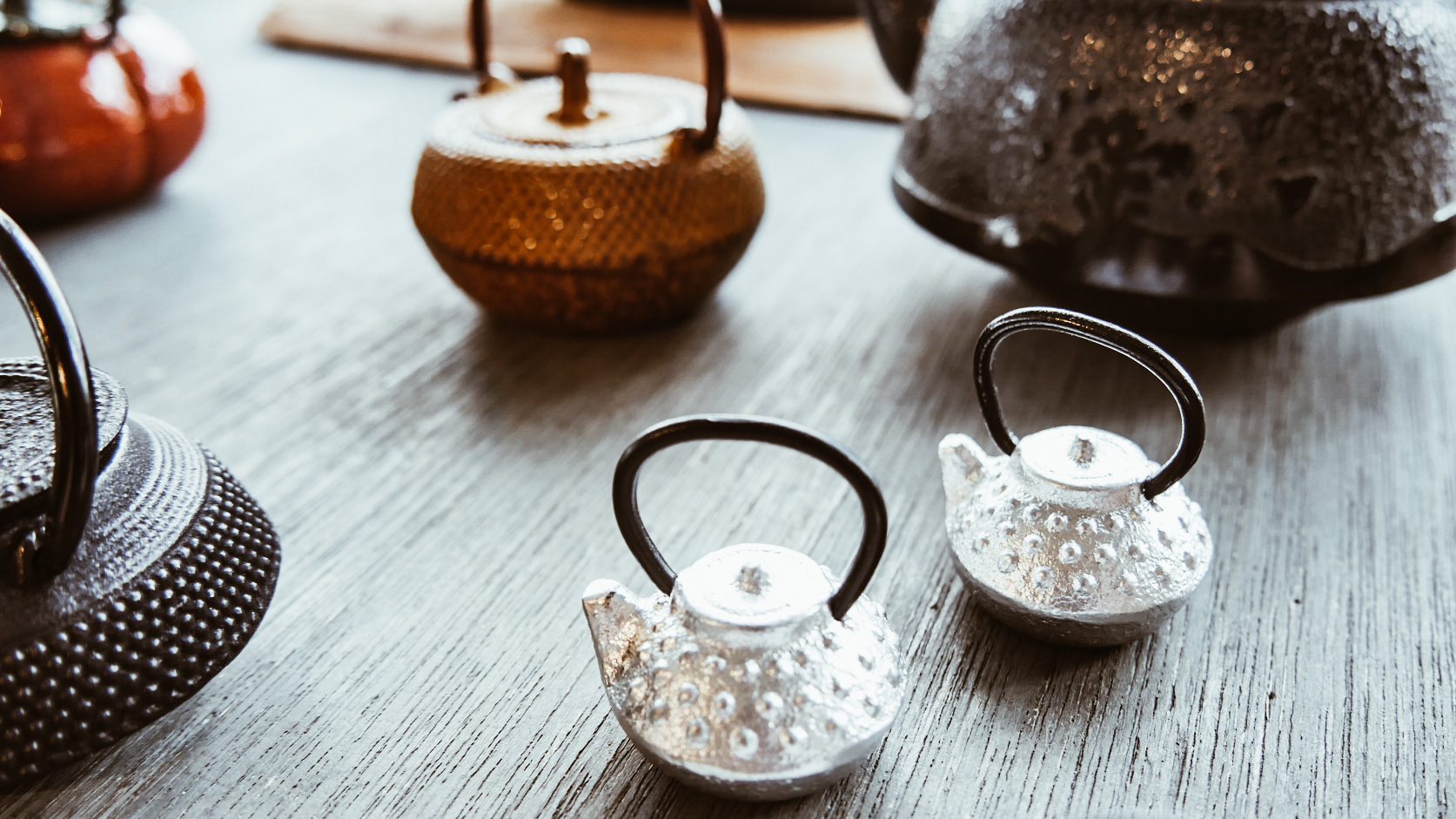
More than just tea
Although the products related to the tea ceremony are the most famous among the Nambu ironware, there are many other items related to the home that can be purchased. In fact, Western kitchen cooks know that one of the best investments you can make is a cast iron frying pan.
However, other Nambu ironware items that are worth buying are the furin (the Japanese windchimes), incense holders, small decorations but also chopsticks holders.
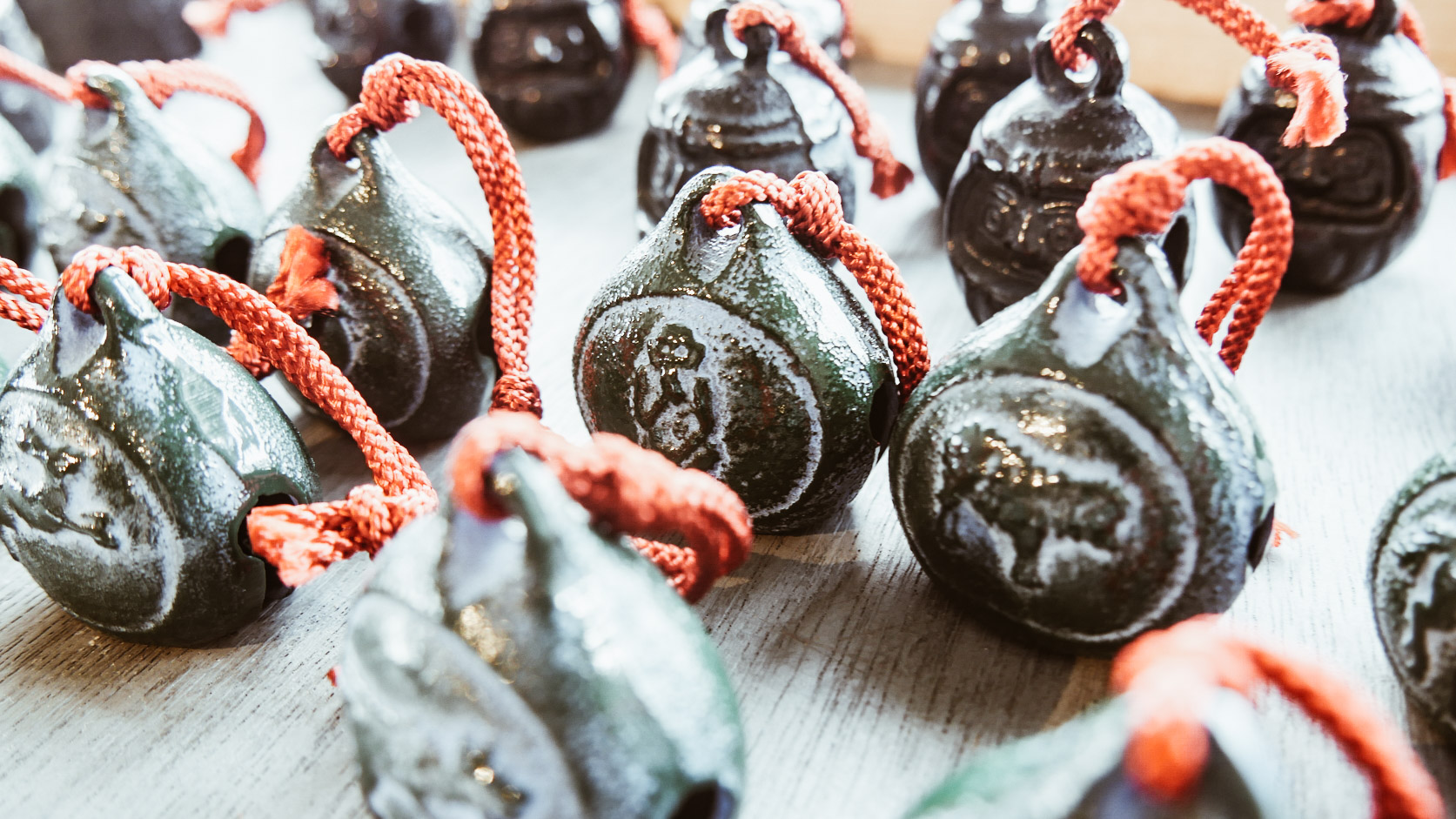
Have you ever bought any of these items or would you like to take some? Let us know in the comments or on our Facebook page!







